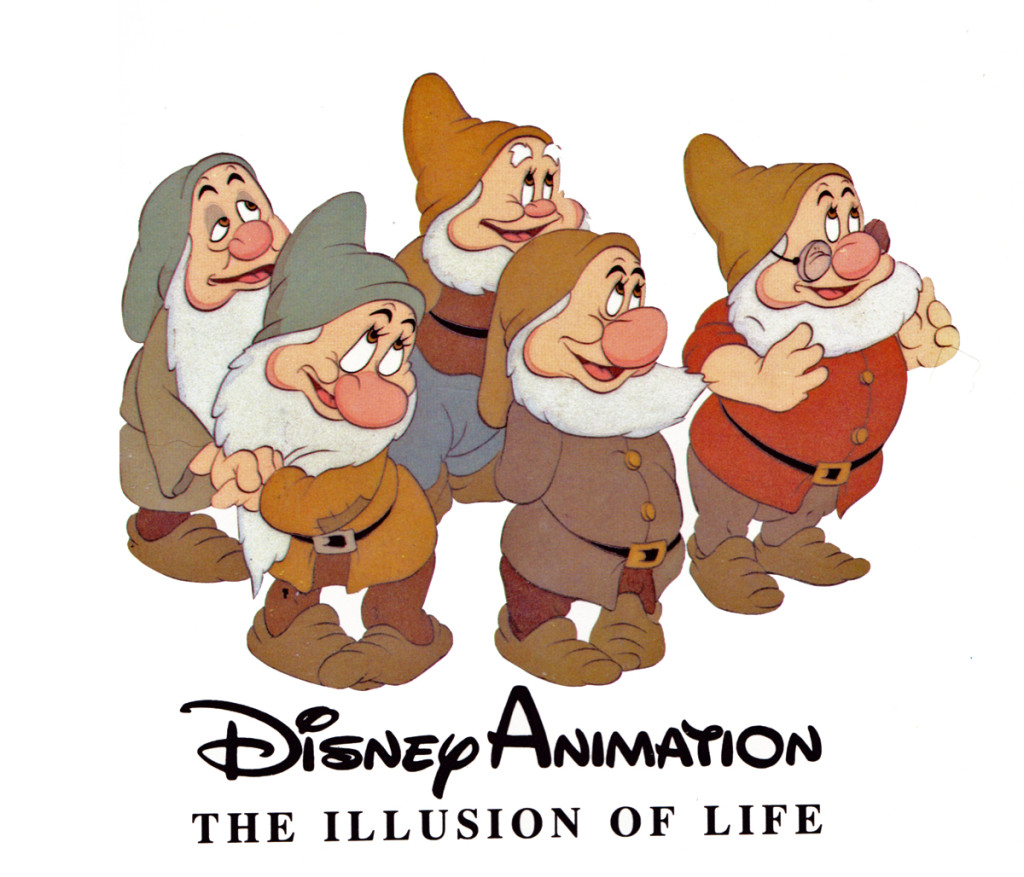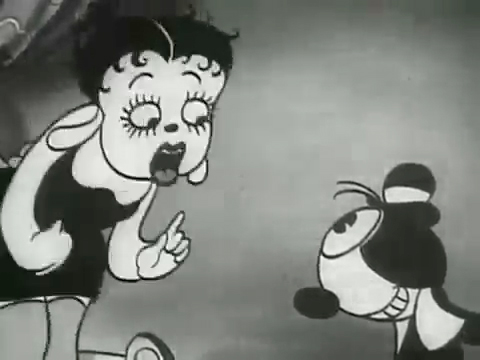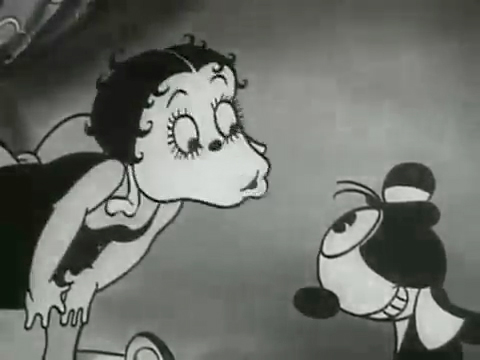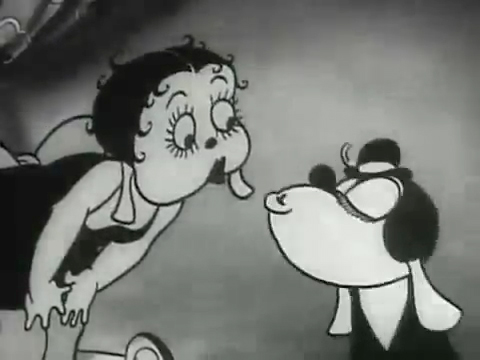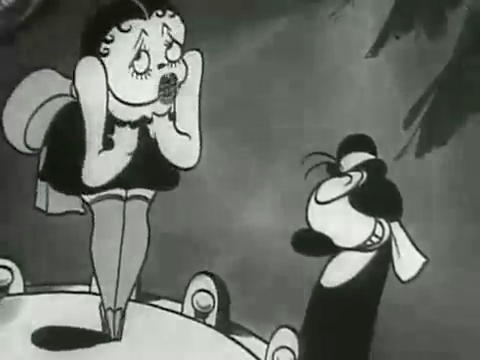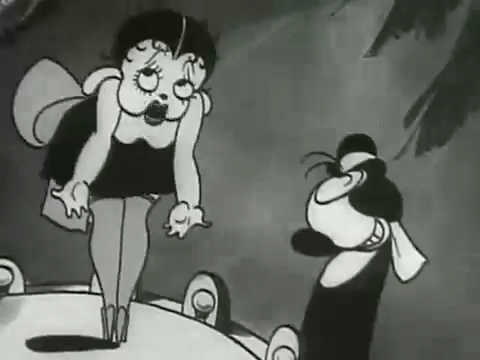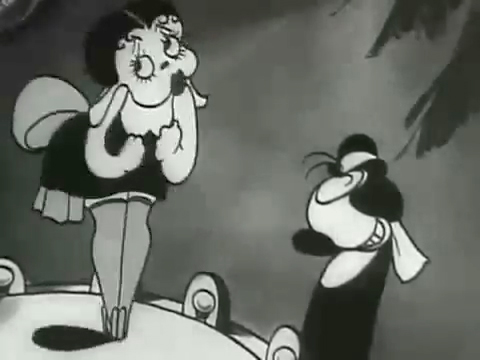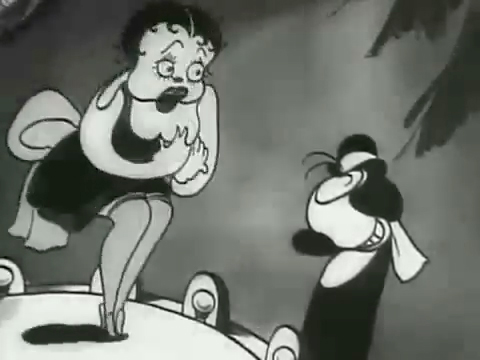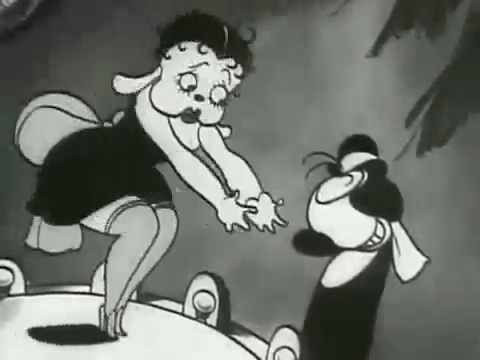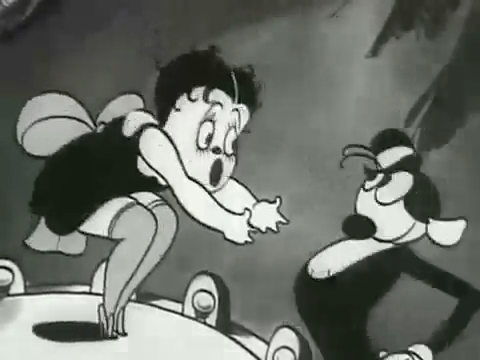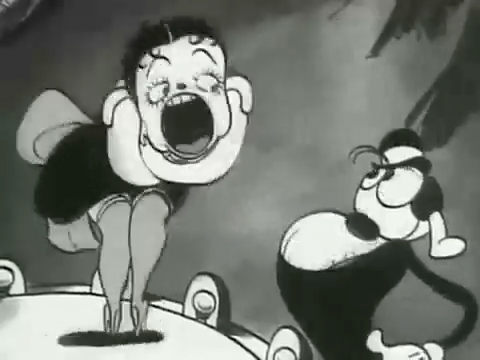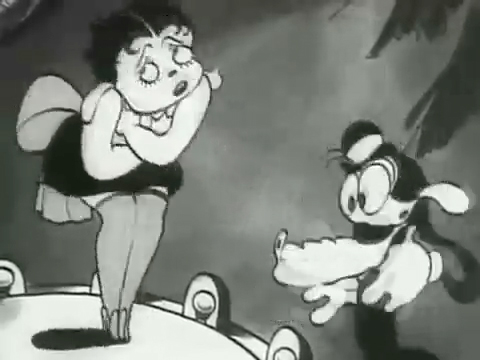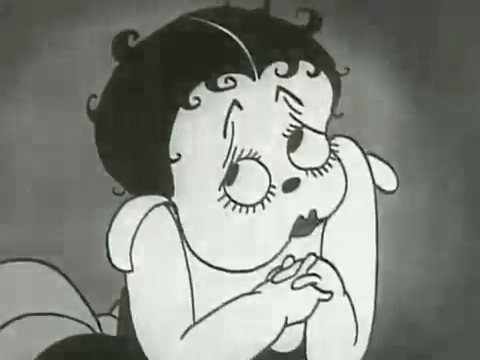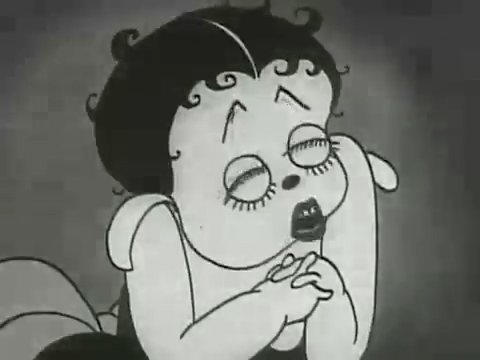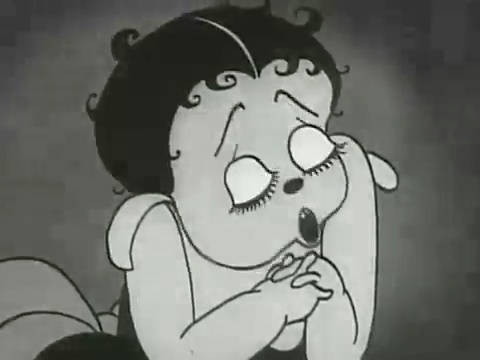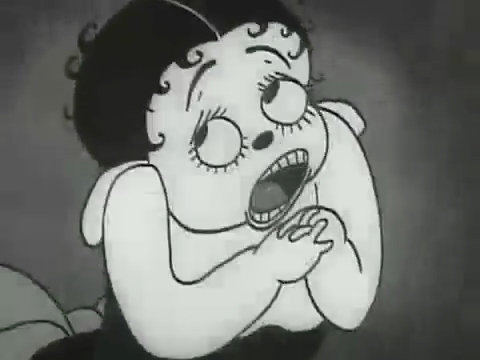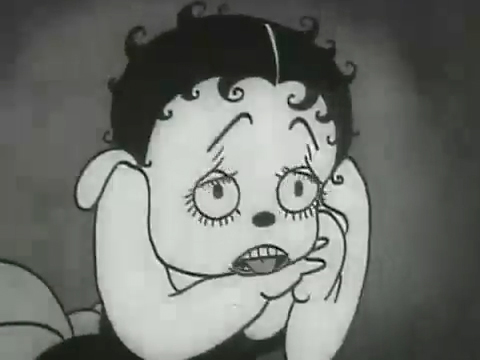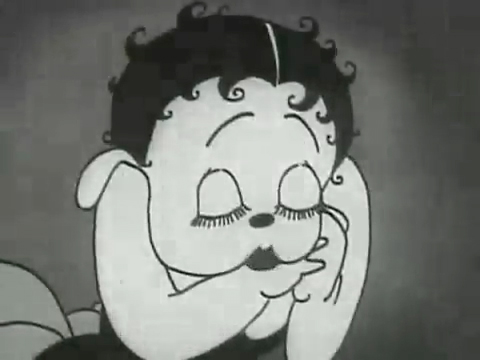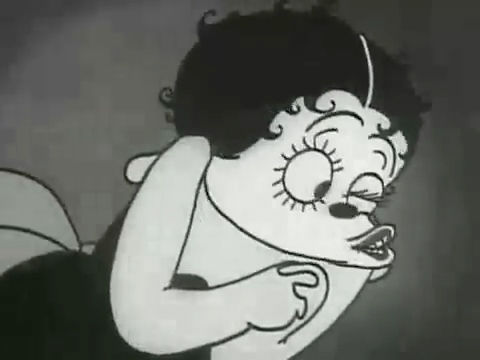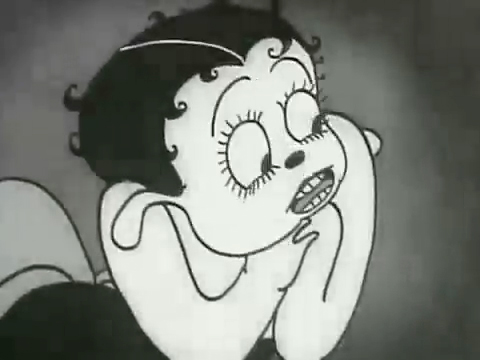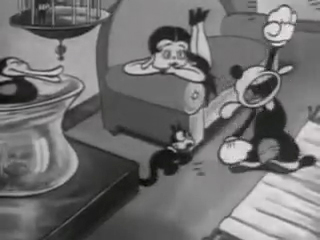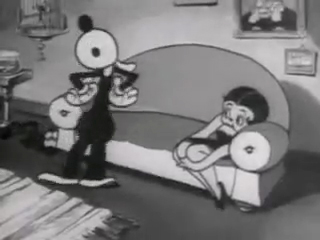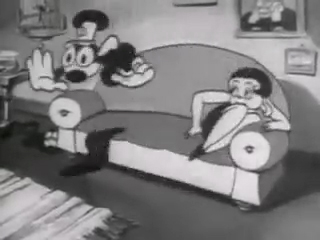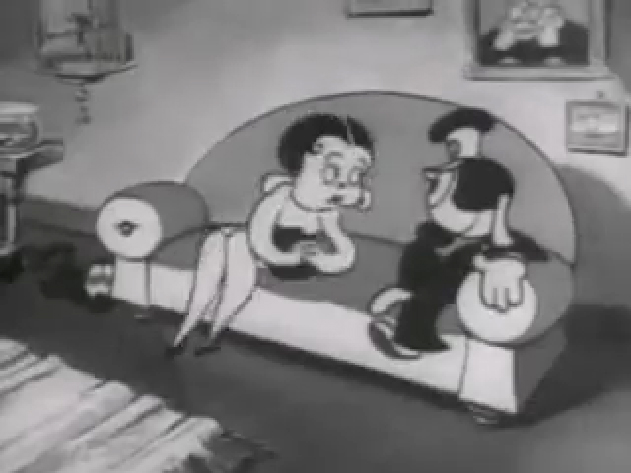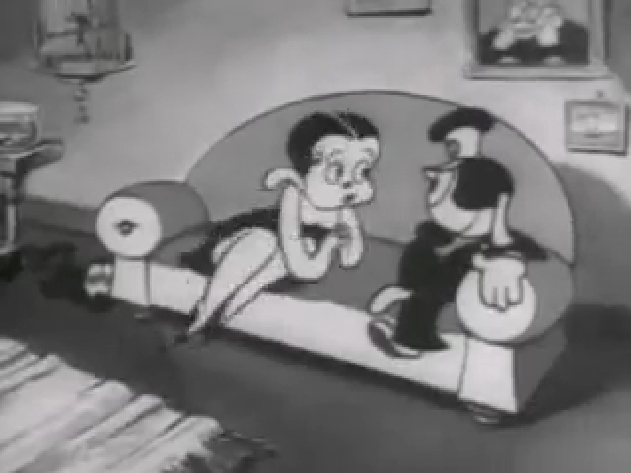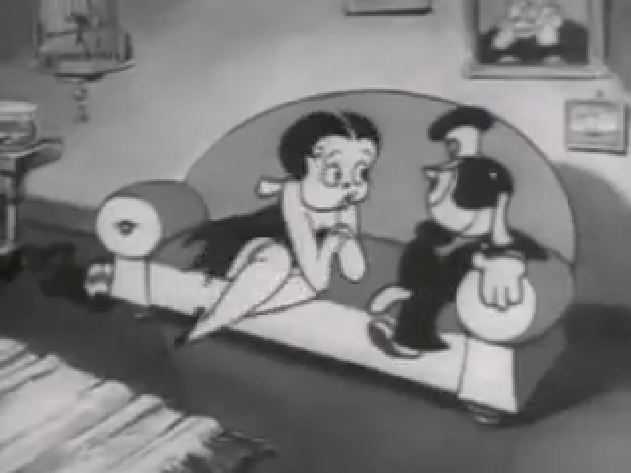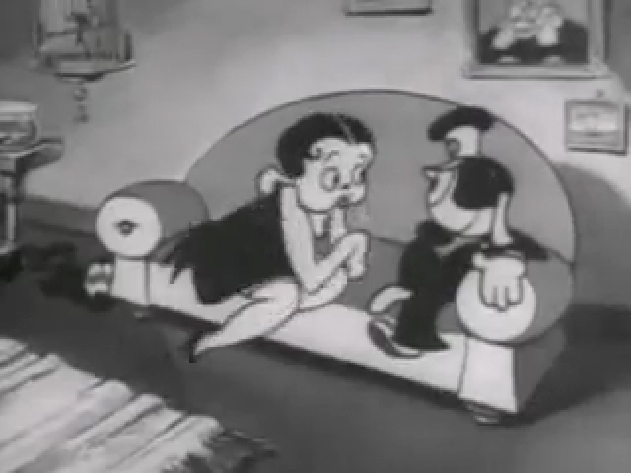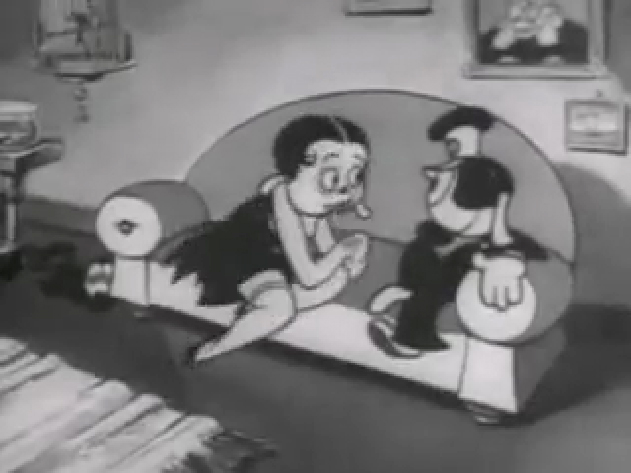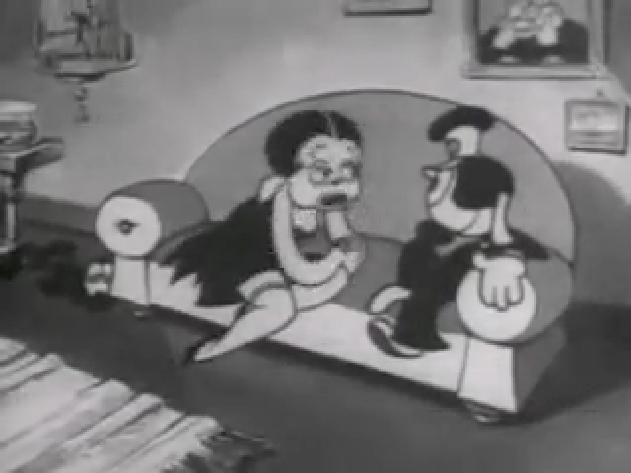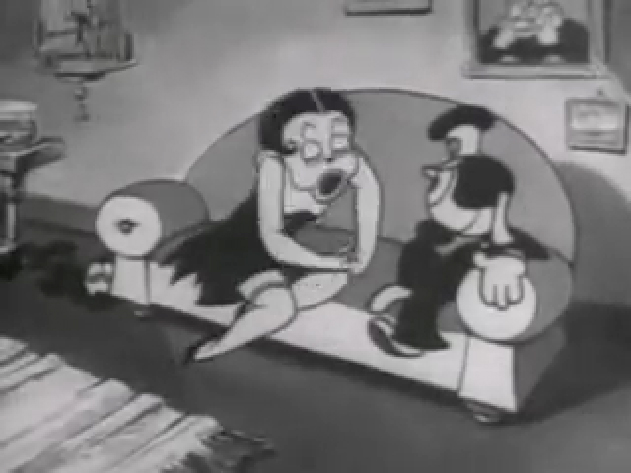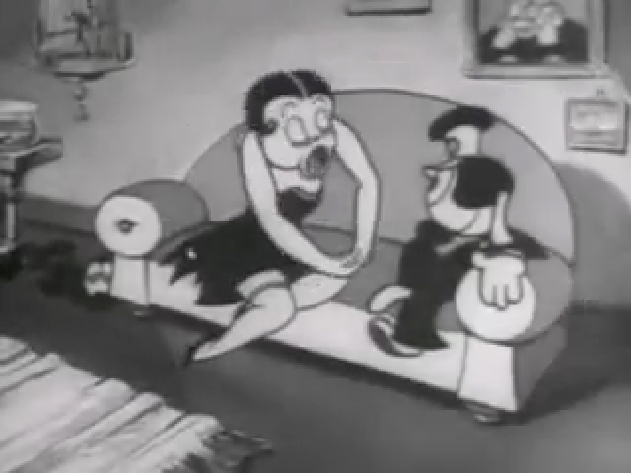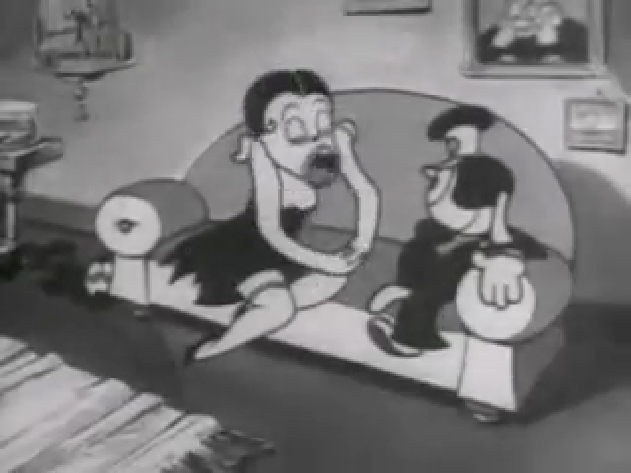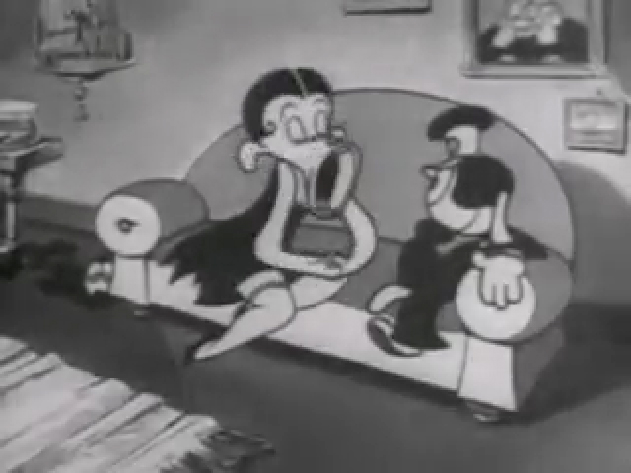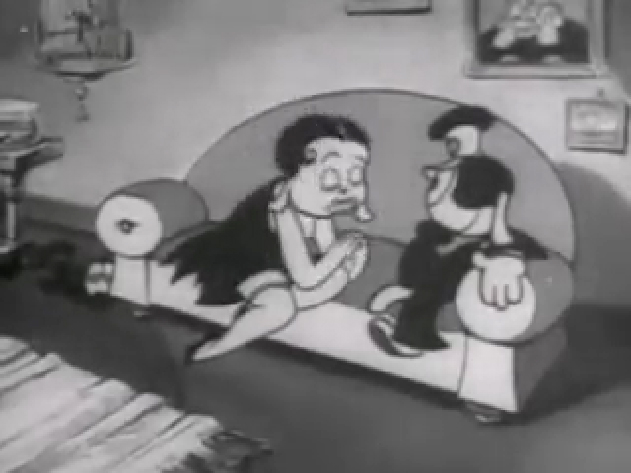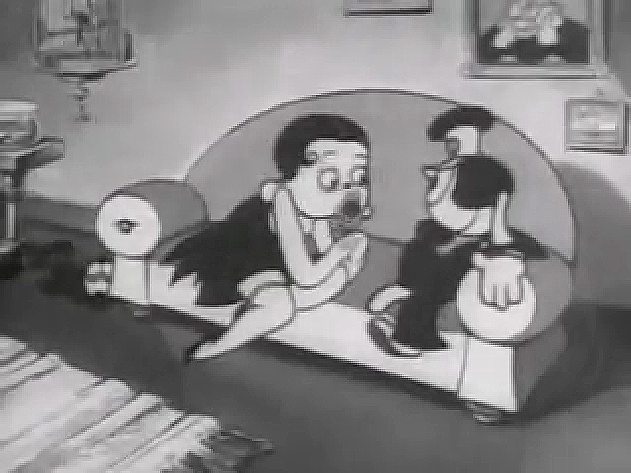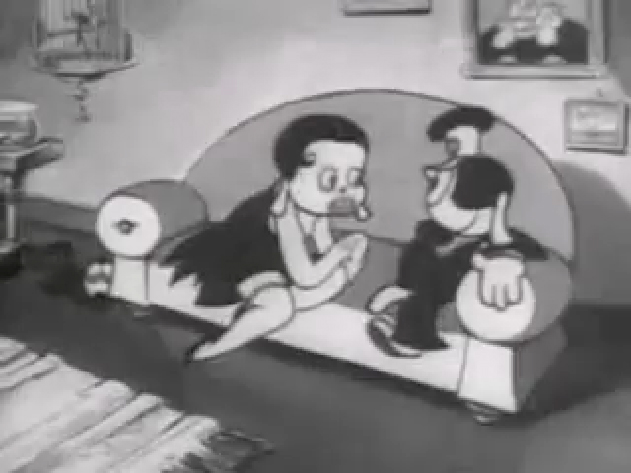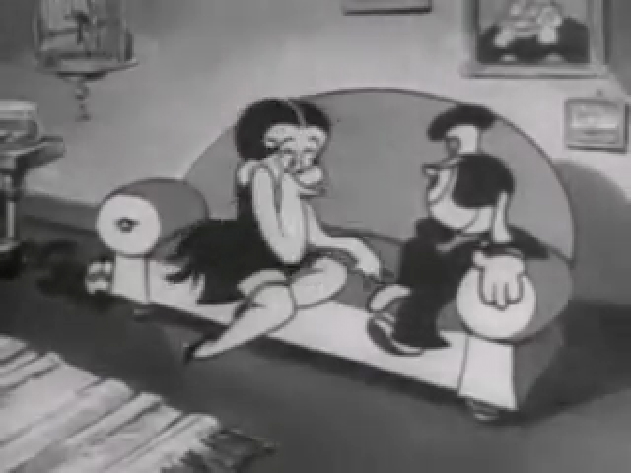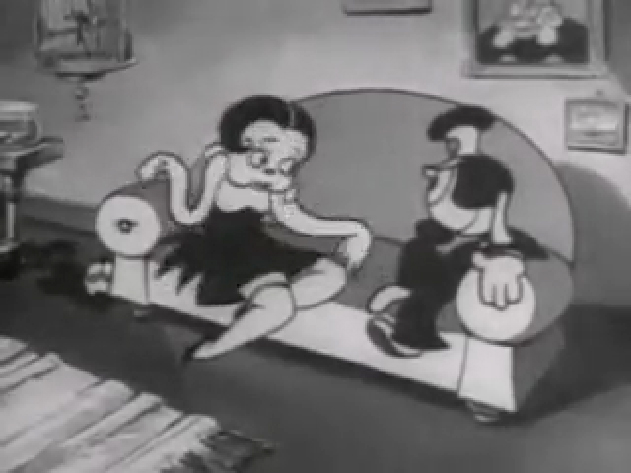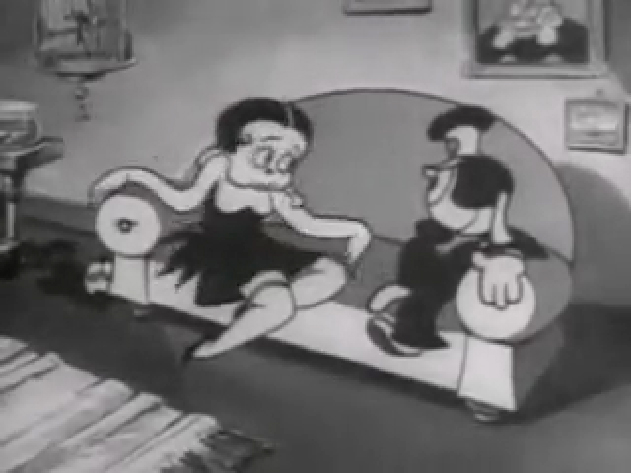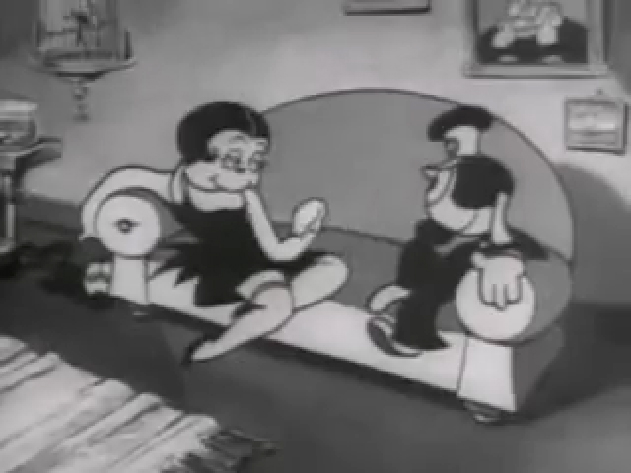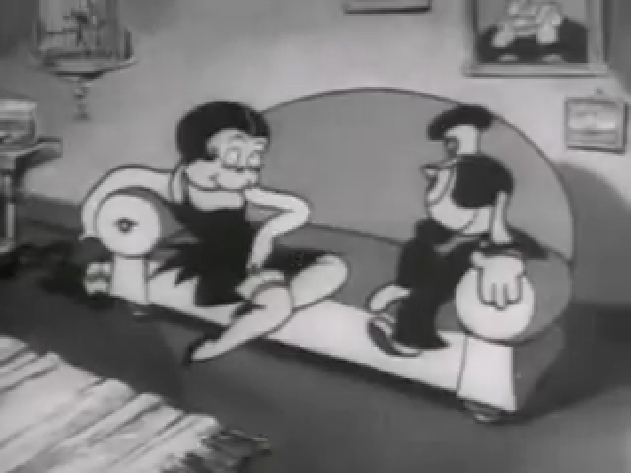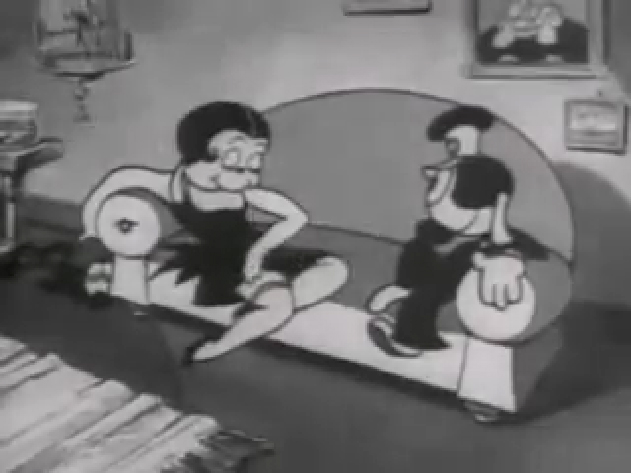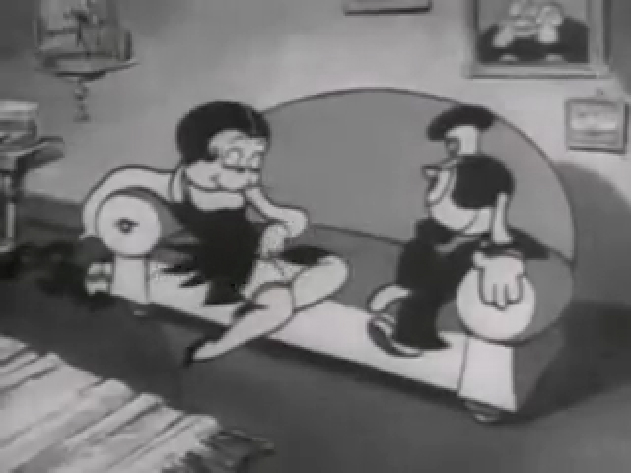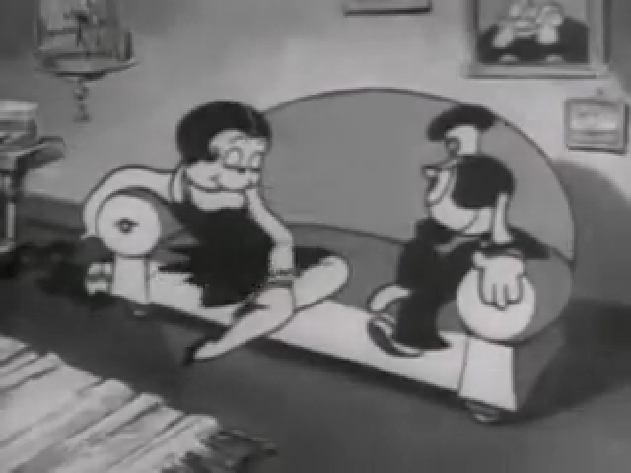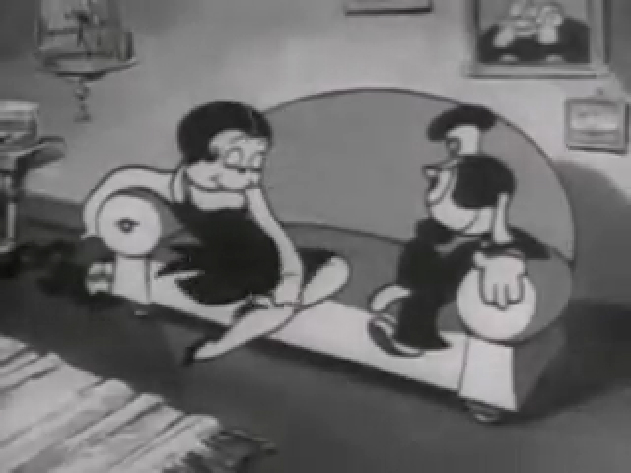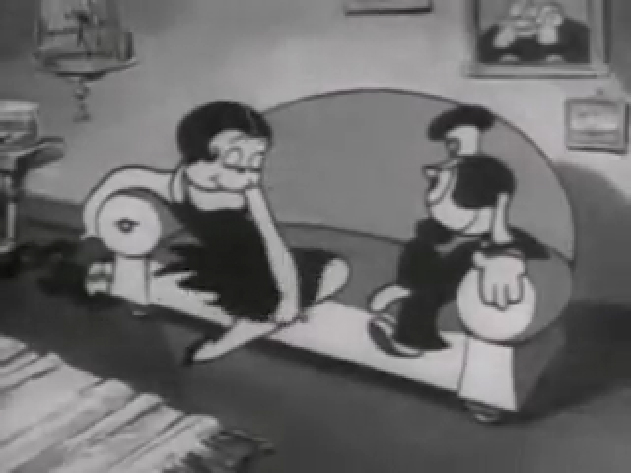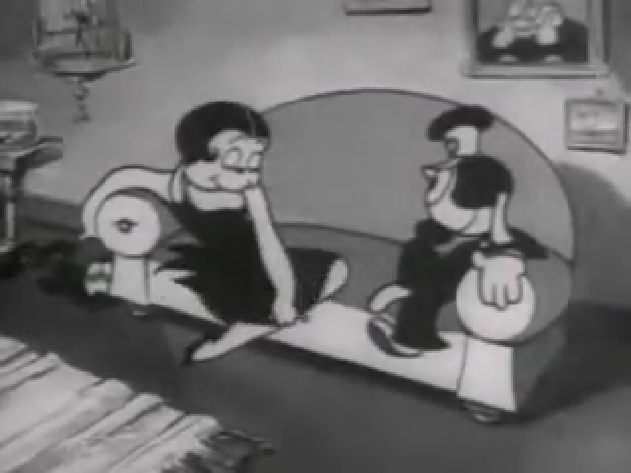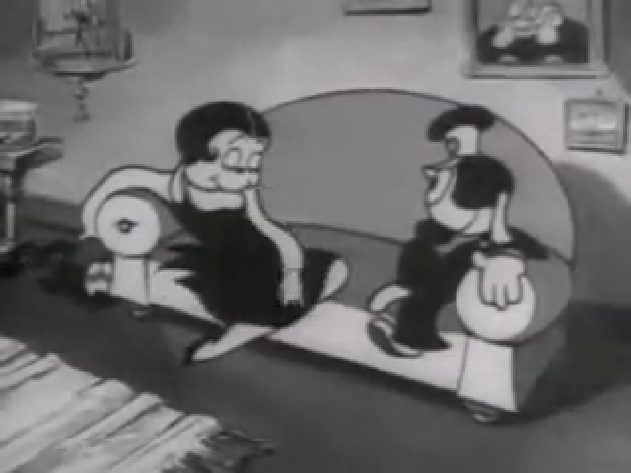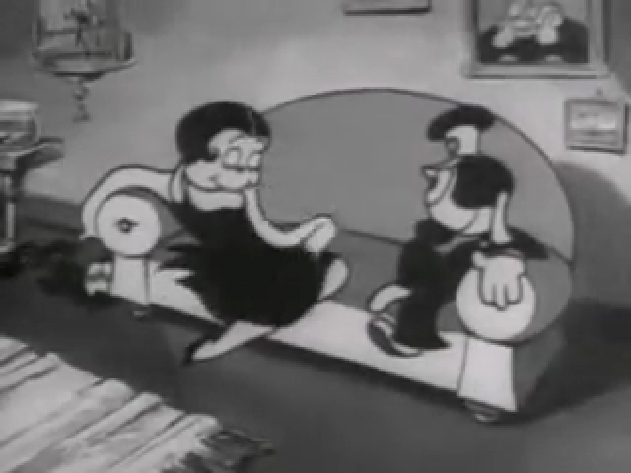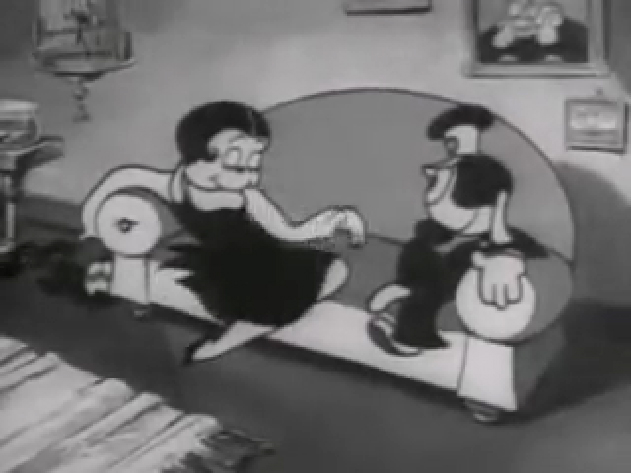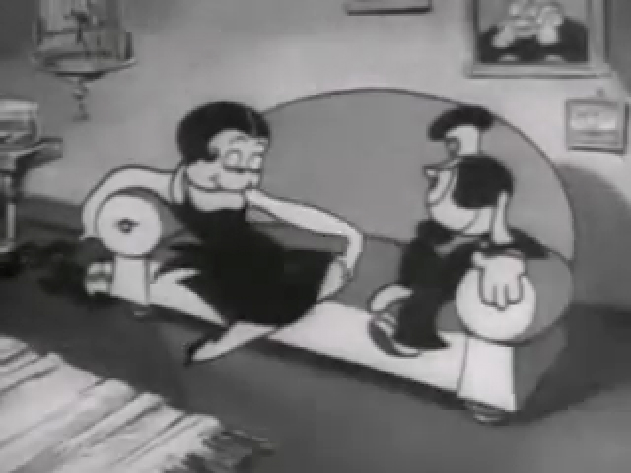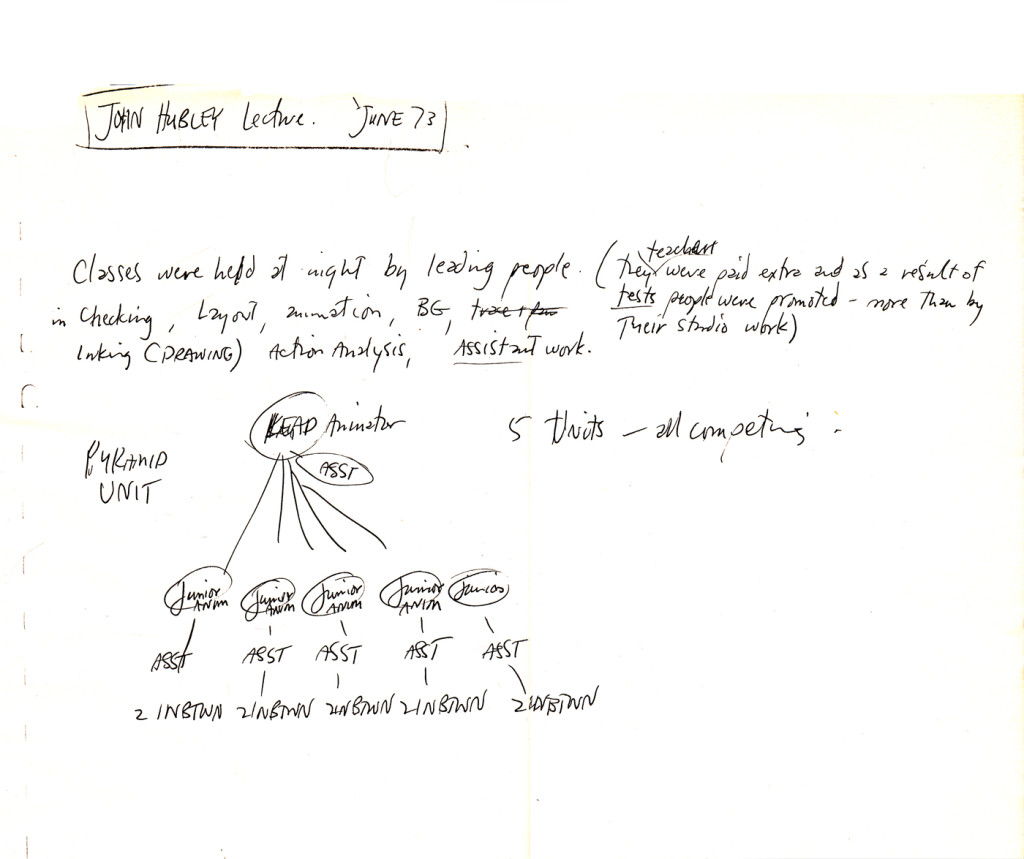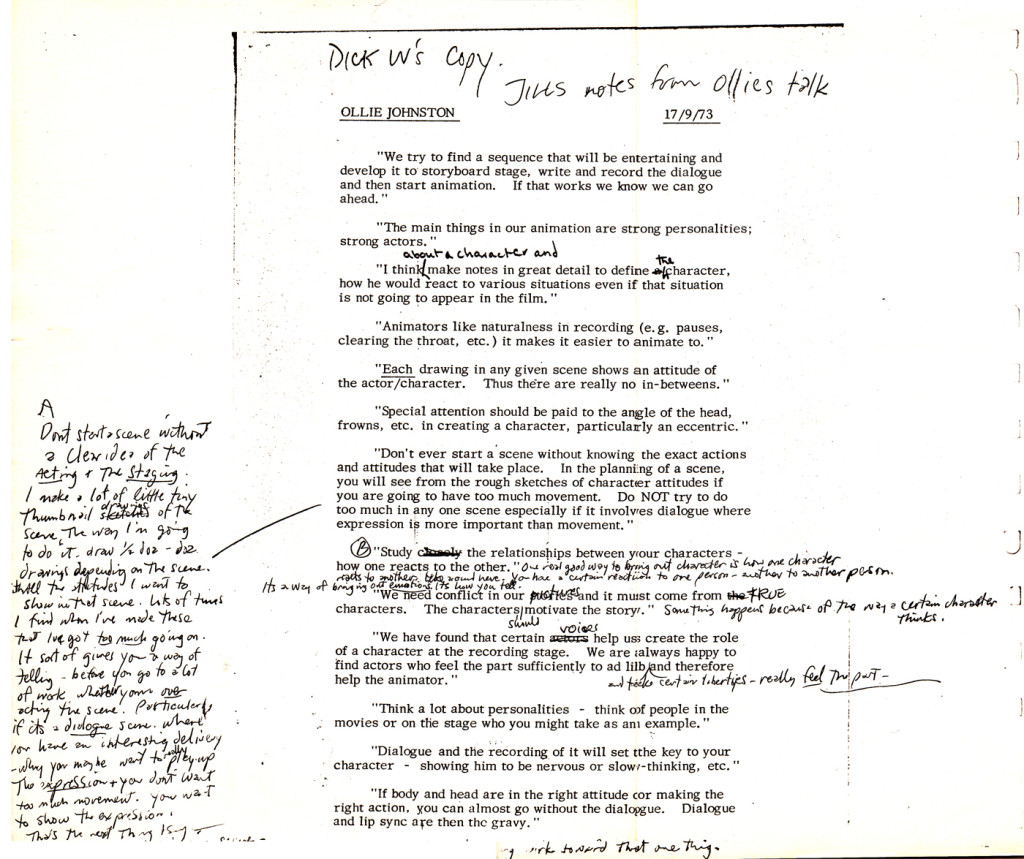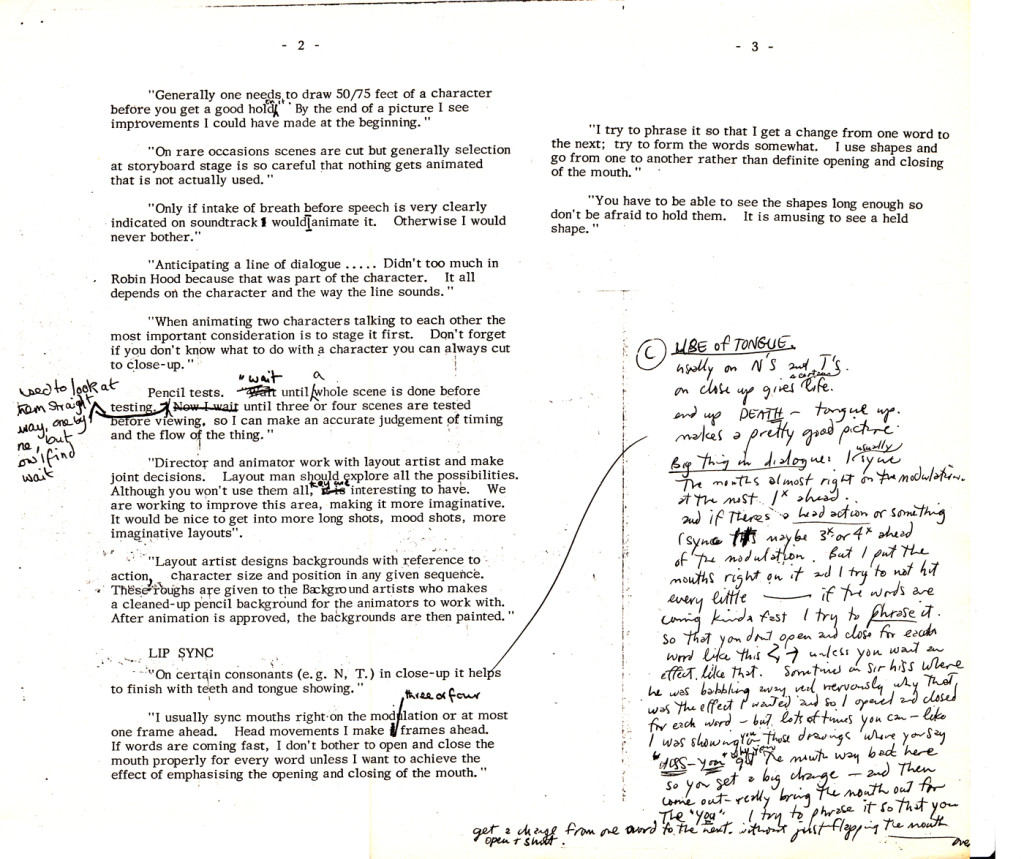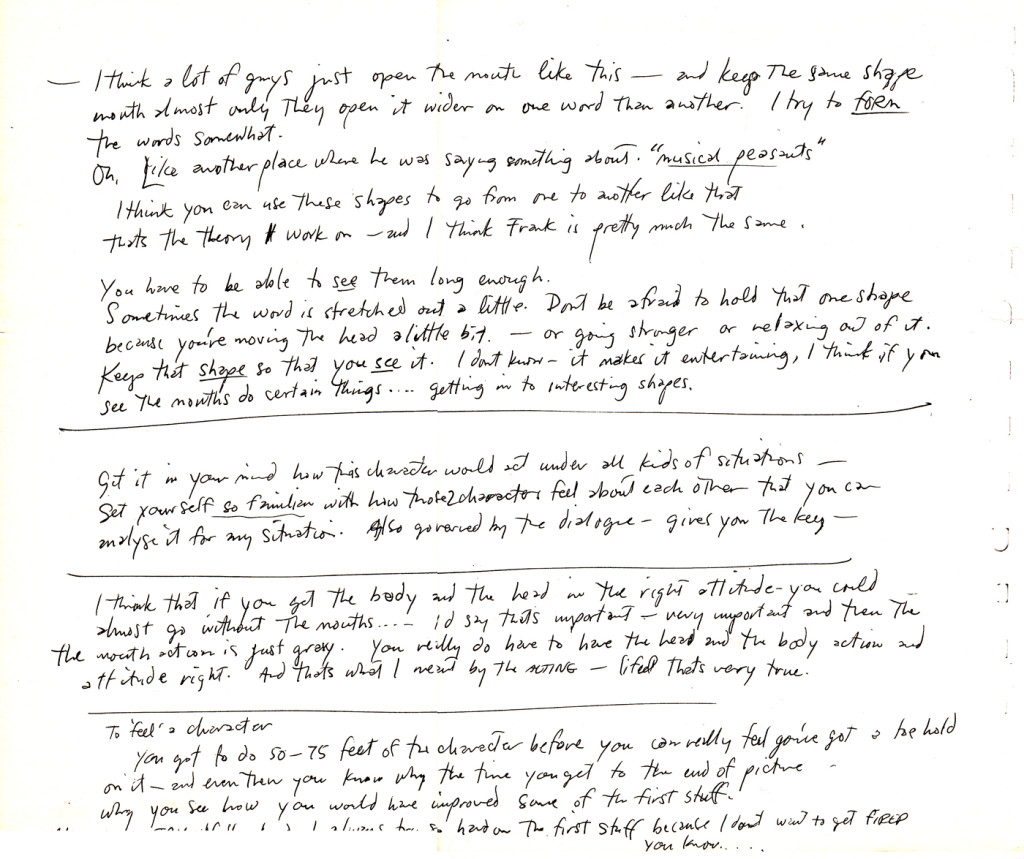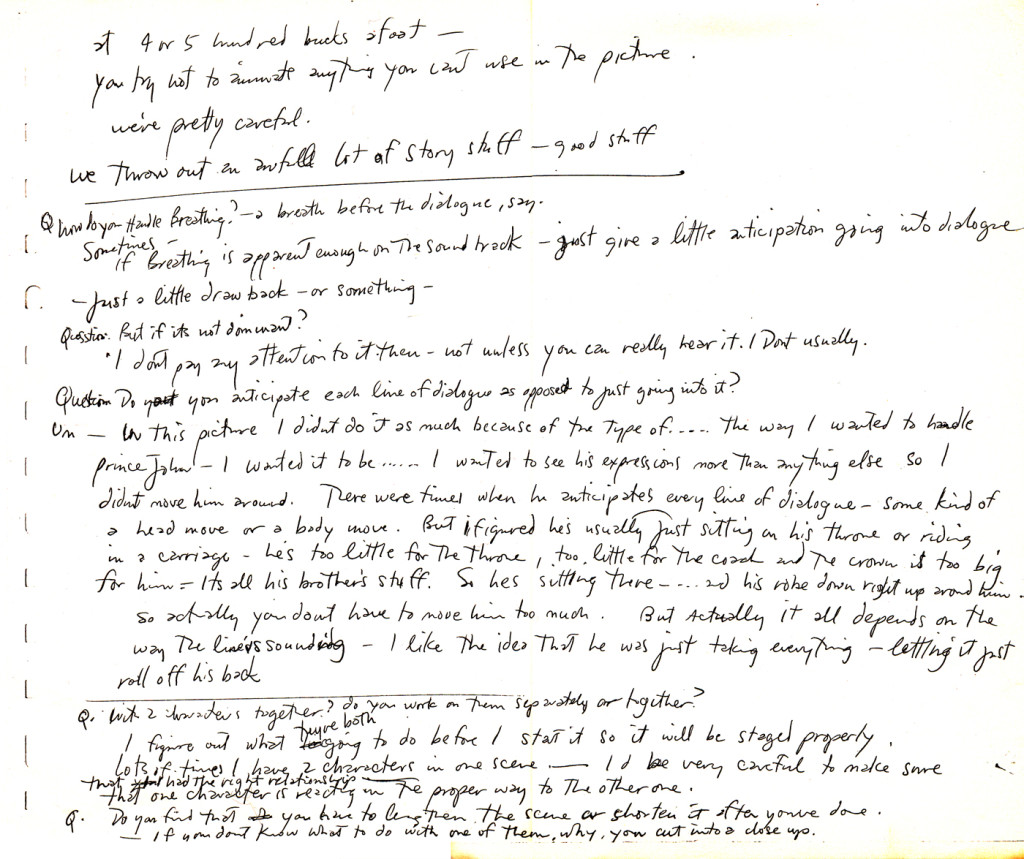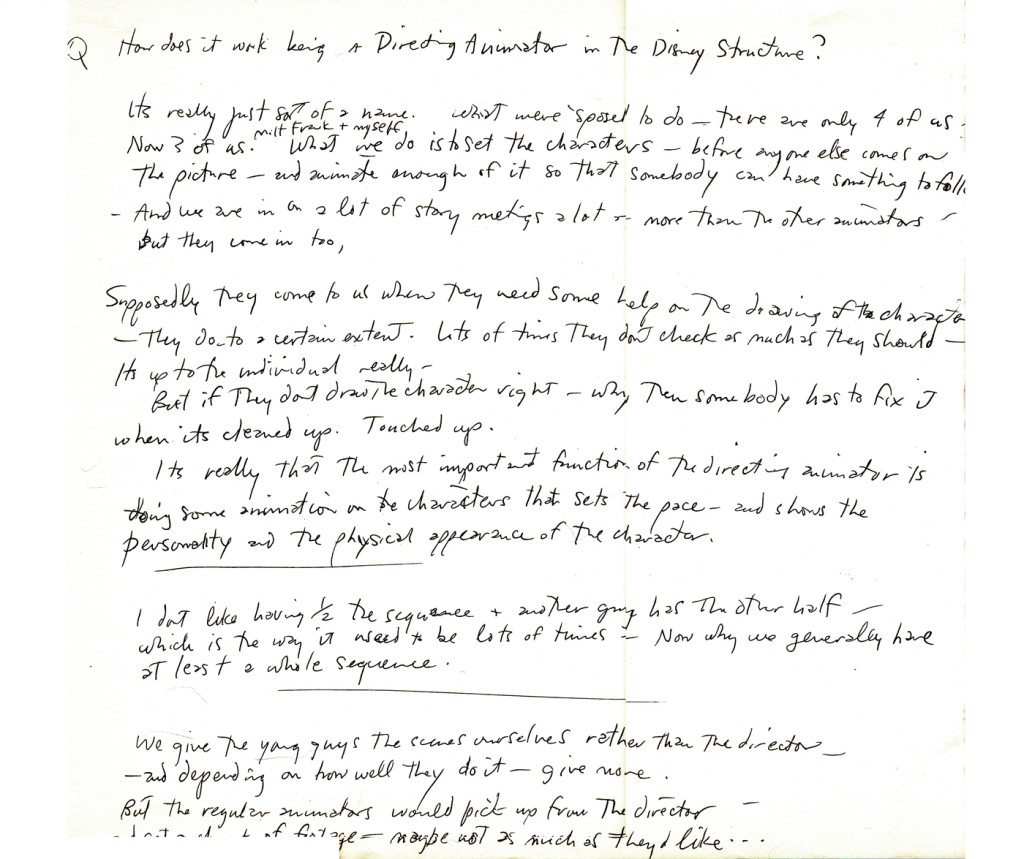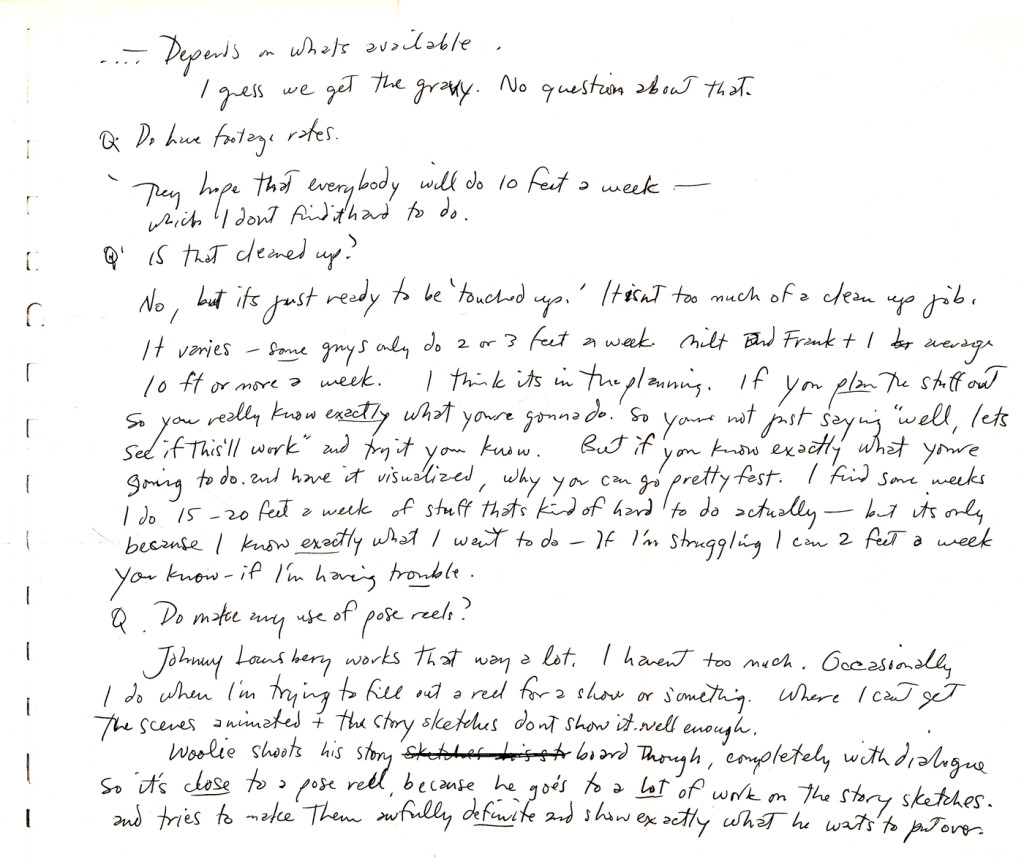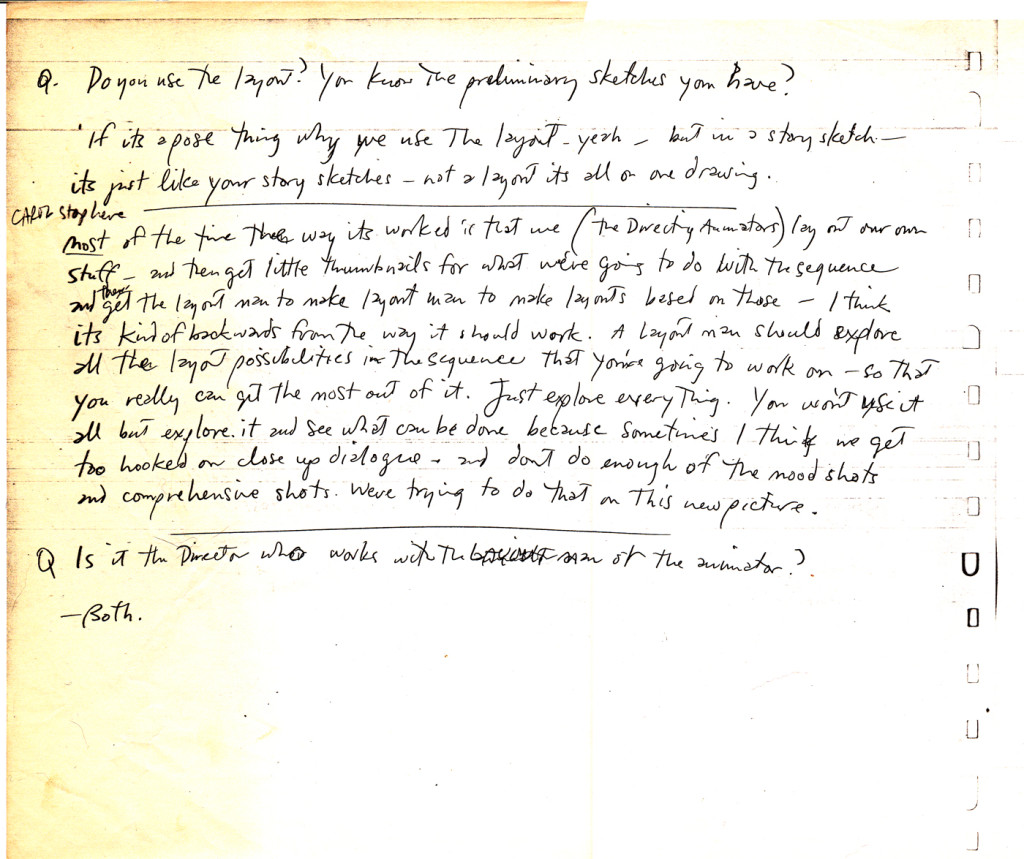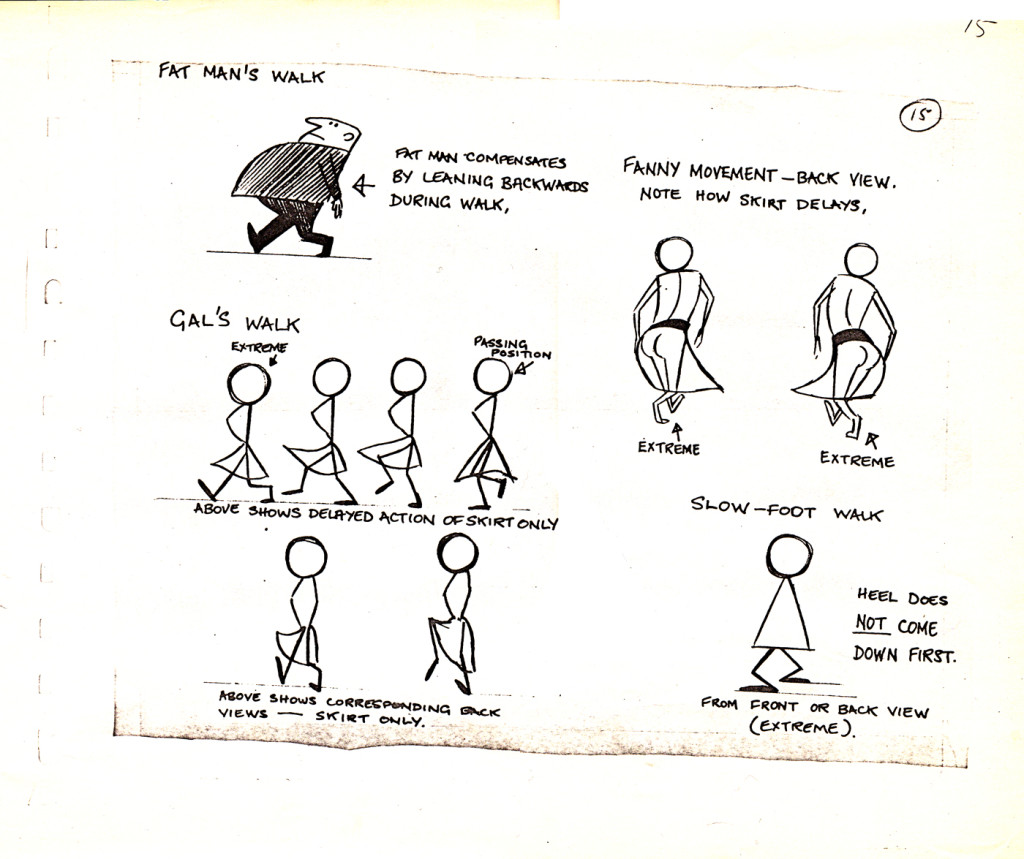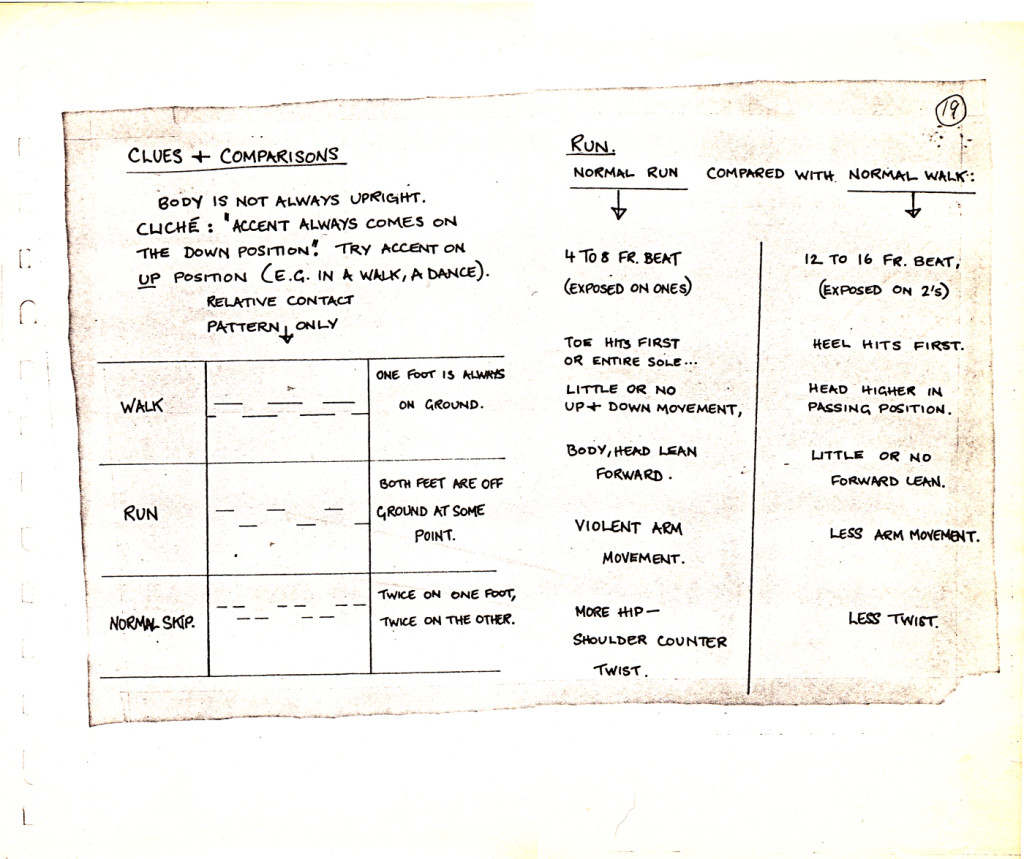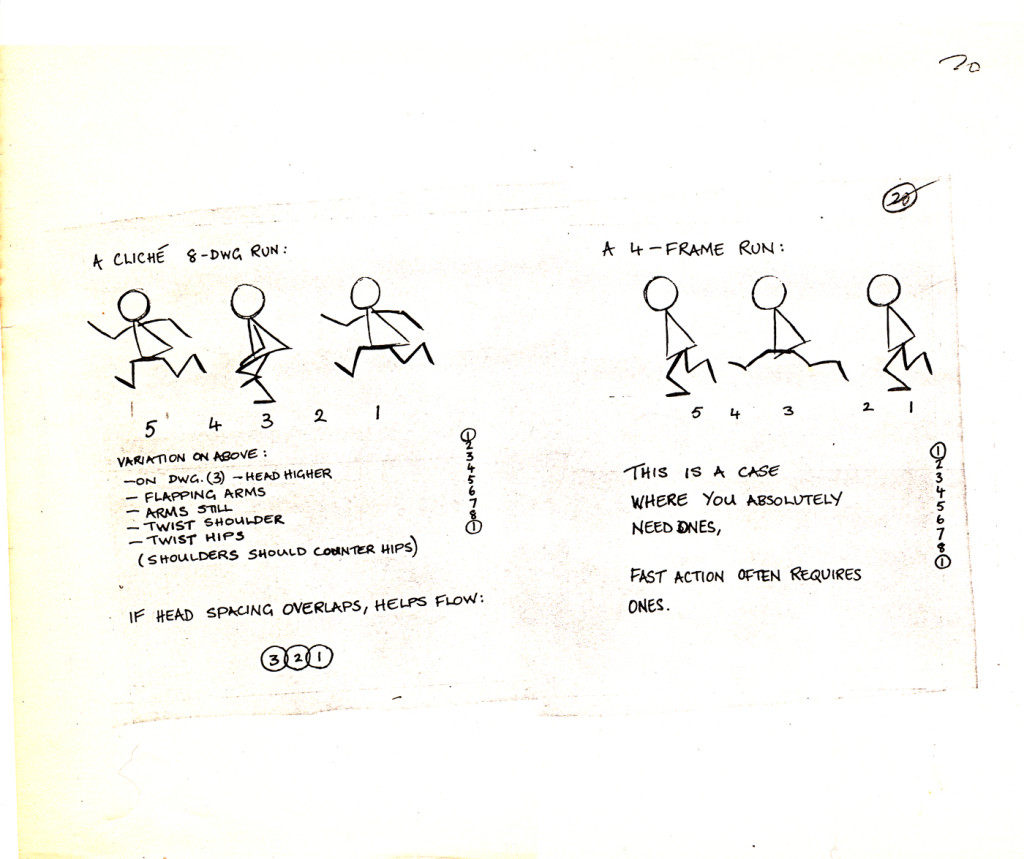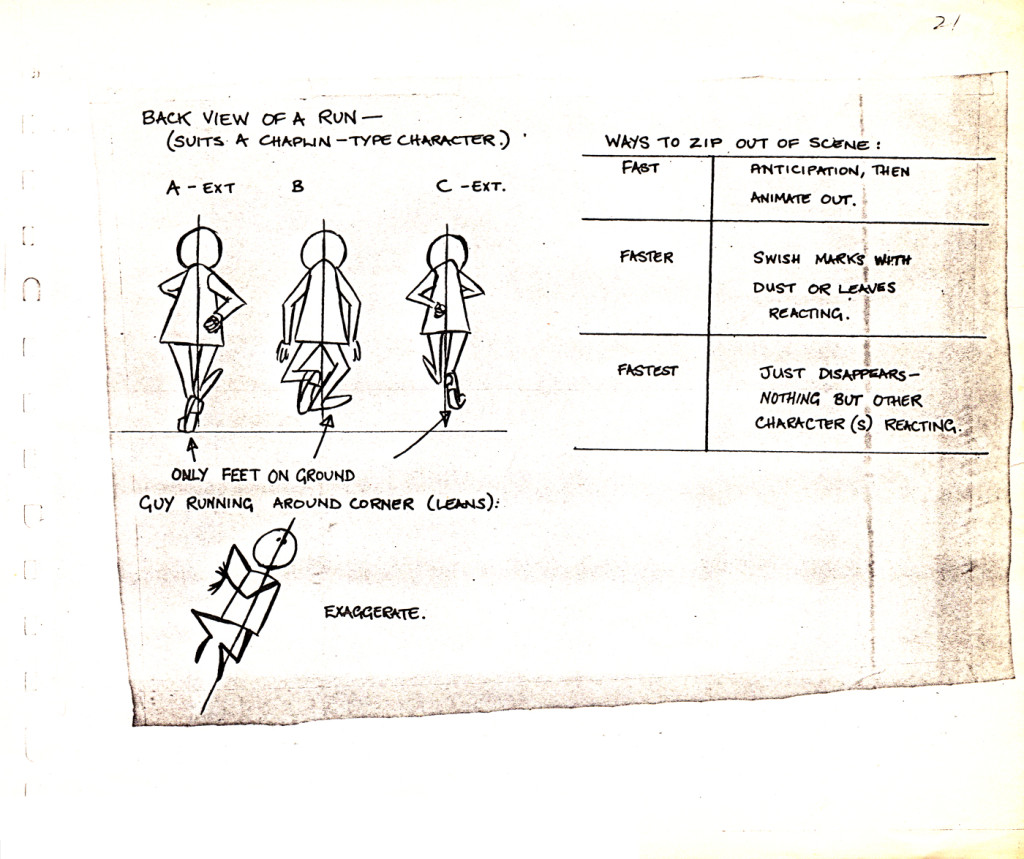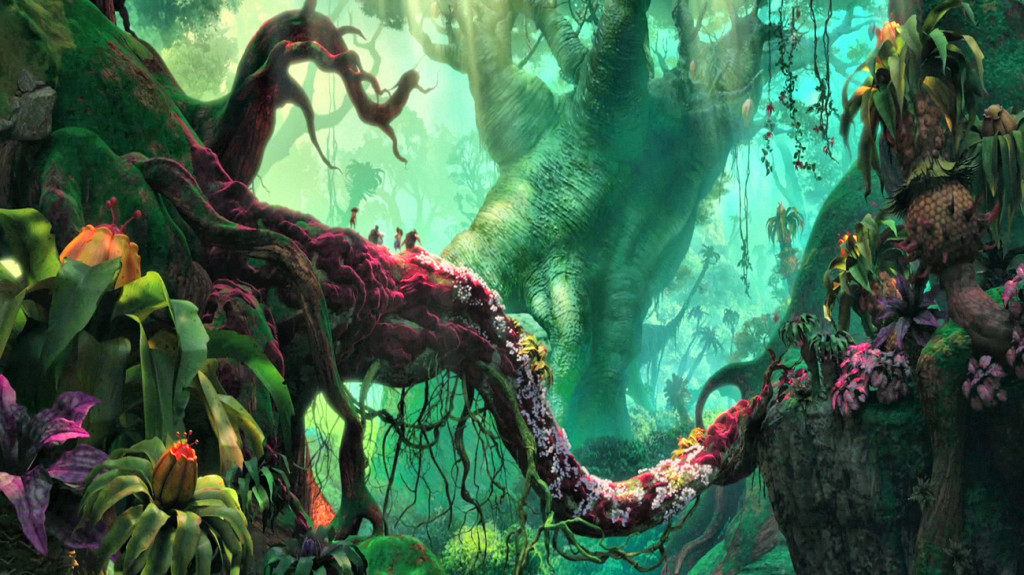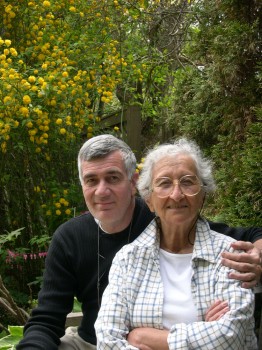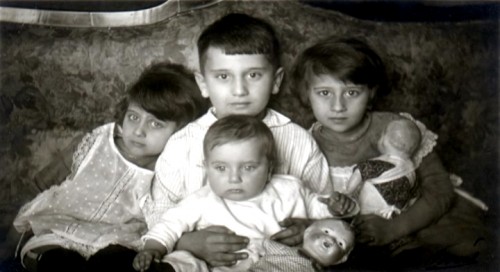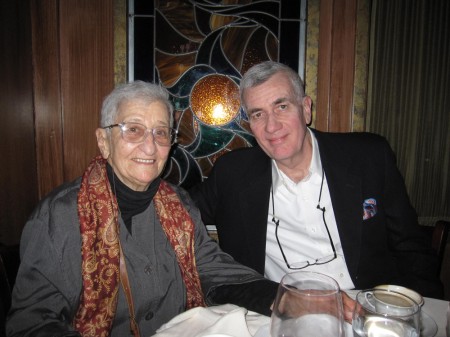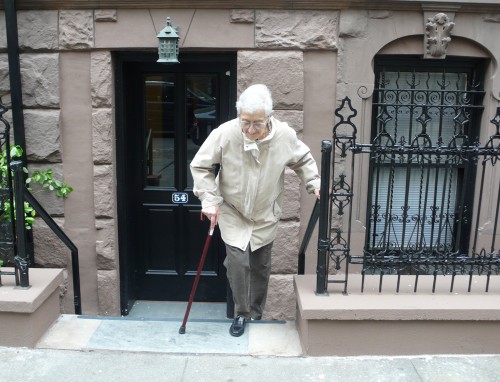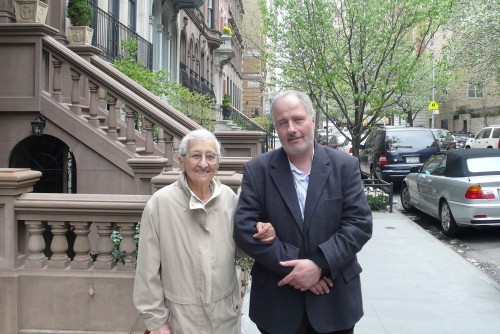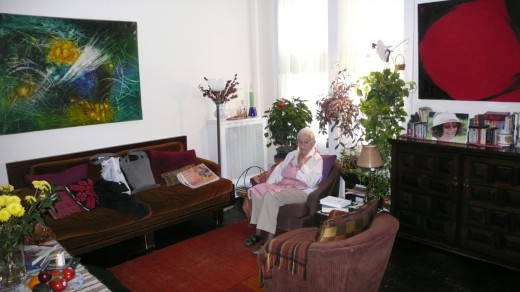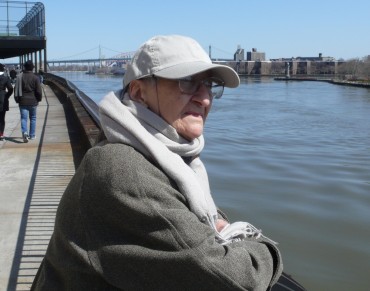Search ResultsFor "Raggedy Ann"
Commentary 06 Apr 2013 04:25 am
Brewsing
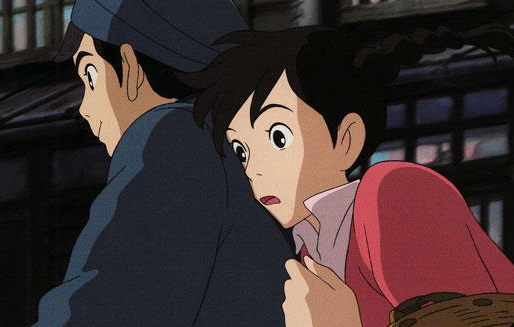 My thoughts keep going back to From Up on Poppy Hill. I really would have liked giving the film a more positive review, and I feel as though I should go back and see the film again. Maybe I didn’t give it enough of a chance; however, I can’t think of any dynamic scene in the movie that is enticing me back.
My thoughts keep going back to From Up on Poppy Hill. I really would have liked giving the film a more positive review, and I feel as though I should go back and see the film again. Maybe I didn’t give it enough of a chance; however, I can’t think of any dynamic scene in the movie that is enticing me back.
The entire film is professionally and finely planned and layed-out as would be expected from a Ghibli work. The drawing is excellent, and the backgrounds are quite fine and strongly detailed. But there just isn’t anything that soars.
I think of Ponyo riding those waves of the Tsunami. My heart – my entire body lifted in exuberance with that scene. No matter how many times I’ve seen the film it always does it.
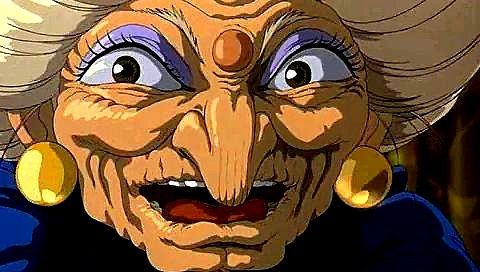 I think of Spirited Away (so many moments) where Chihiro rides on that ghost train with “No Name” to the dark foreign and silent land of Yubaba, Zeniba’s twin sister. I think of Princess Mononoke when the god of the forest, dressed like a deer stands watching him from across the lake. It’s so glorious a moment. Or one of my all time favorite moments in the movies – standing at the bus stop with Totoro in the rain waiting for the bus to arrive. It doesn’t get better than that in film.
I think of Spirited Away (so many moments) where Chihiro rides on that ghost train with “No Name” to the dark foreign and silent land of Yubaba, Zeniba’s twin sister. I think of Princess Mononoke when the god of the forest, dressed like a deer stands watching him from across the lake. It’s so glorious a moment. Or one of my all time favorite moments in the movies – standing at the bus stop with Totoro in the rain waiting for the bus to arrive. It doesn’t get better than that in film.
There are so many other Ghibli moments for me, I could keep going. Yet not even a hint of any of these in Poppy Hill. Maybe that’s why I felt I was so negative. I wanted something I shouldn’t have expected from a sophomore director without the proper experience to play out that very complex relationship between him and the girl. It becomes cliché when it should have torn at our hearts.
Who knows. Maybe I’ll go back and see the version of the film in Japanese rather than the English dubbed. Interesting that I have no intentions or plans to see The Croods again. Maybe when the Japanese dubbed version comes out so that I won’t have to hear those Nick Cage Valley Girl accents again.
ITVS Cut Out IDs
The Soup Factory in the UK, the studio owned and supervised by Andy Soup, is rightly taking pride in some IDs they did for ITVS. These pieces are animated cut-outs, models that were designed for 3D table top animation. They are beautiful pieces, and I thought it a good idea to link to them so that you can take them in as well. After all, we in the US don’t get to see the advertisements done for ITVS.
For the 6 IDs, Espen Haslene directed the films. He is the leader of a studio known as Tundra, a partnership of Scandinavian/French/Italian/English filmmakers, animators, graphic and web designers. Tundra worked together with Martin M. Andersen, head of Andersen M. Studio, acting as the stop-motion Animation Director. There’s obviously some computer animation mixed with the stop motion work, and you’ll find a complete list of credits when you go to the Soup Factory‘s page for the films to view the IDs.
Take a look here.
I’ve been going through Frank Thomas and Ollie Johnston‘s first book, Disney Animation: The Illusion of Life. I have to admit that I haven’t been much of a supporter of the book. I remember first getting it and not reading it. I just went through the pictures. Then I read all the captions under the photo/artwork/images. That’s about as far as I got with the book. I don’t really know why; I just wasn’t inclined to really dig my teeth into it, and I never read it. Bt then I’ve often had that problem with large picture books, especially if they’re supposed to be teaching something. The book seems confused. It doesn’t know if it wants to be a glossy art book that teaches you something.
I guess I’ll make up for some lost time and will read it now. But I think in doing it, I’ll take my time with it and will write about it in some detail, trying to get my thoughts out on paper (or on blog). I know that it’s the first of the animation books I can remember where they had some pure gold for illustrations, and they printed it too small to be able to properly get it. The good part about the images on the web is that you can blow them up pretty easily. And I’m going to.
Perhaps I’m inspired by Mike Barrier‘s negative comments about it. His writing, for me, is pretty funny, too. Take a look at this review of Dick Williams‘ book where he necessarily goes to the Thomas-Johnston book.
Time to read it for myself and see what they’re actually saying. I have read others of their books and haven’t been inspired.
Book Reports
 I’ve been reading lately a different sort of book. it’s certainly not a quick read getting through Donald Crafton‘s most recent book, Shadow of a Mouse. I’ve been a fan of Donald Crafton’s work since his first book, Before Mickey: The Animated Film, 1898-1928. It was a study of a little-known part of animation history, and he explored and revealed the difficult period. Certainly, this was a fine feat of research combined with his excellent writing.
I’ve been reading lately a different sort of book. it’s certainly not a quick read getting through Donald Crafton‘s most recent book, Shadow of a Mouse. I’ve been a fan of Donald Crafton’s work since his first book, Before Mickey: The Animated Film, 1898-1928. It was a study of a little-known part of animation history, and he explored and revealed the difficult period. Certainly, this was a fine feat of research combined with his excellent writing.
Shadow of a Mouse is something else again; it’s a book that employs the author’s extensive knowledge of film history to help consider a number of complex theoretical problems relating to animation, which he poses. The book carefully rethinks animation and all of its properties. Blending 2D, stop-motion, cgi, and more experimental forms, the book challenges the way we think of animated film. It’s a tough and complex read though I’m certainly enjoying it.
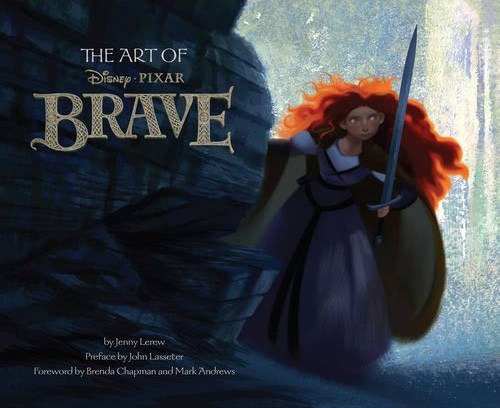 I’ve also been reading Jenny Lerew‘s The Art of Brave. I received apologies from Chronicle books when they’d first published the companion to Pixar’s Brave. They’d gone through their print run quickly and weren’t able to send me a copy. I made myself something of a pest after that and pursued them for a reviewer’s copy. Ultimately, I got my hands on one and am quite enjoying it. The book is something more of a picture-book (and what great pictures), though I am enjoying Jenny’s writing. I hope, also to finish this pretty soon and will write about it – especially now that the film won the Oscar and is available in DVD.
I’ve also been reading Jenny Lerew‘s The Art of Brave. I received apologies from Chronicle books when they’d first published the companion to Pixar’s Brave. They’d gone through their print run quickly and weren’t able to send me a copy. I made myself something of a pest after that and pursued them for a reviewer’s copy. Ultimately, I got my hands on one and am quite enjoying it. The book is something more of a picture-book (and what great pictures), though I am enjoying Jenny’s writing. I hope, also to finish this pretty soon and will write about it – especially now that the film won the Oscar and is available in DVD.
Shadows
Sometimes you have to take the bull by the horns and do something that nobody wants. During the making of Raggedy Ann & Andy I was supervising the Assistant Animators and Inbetweeners for the course of the production. I was made to jump from being an Inbetweener, myself, to suddenly being someone supervising lots of people (it went up to 150 people at one point toward the end of production) and overseeing their work.
In the middle of all this, there was Art Babbitt‘s sequence. I was the one receiving the work in New York when the shipments arrived. But then, that was just the beautifully animated camel and the two rag dolls that looked like the work of no one else. They were wildly off model – Ann & Andy, our two leads. I was told to leave them as is, by Dick. But I did some slight adjusting trying to get them a little looser to match all the other animation in the film. I wasn’t very successful at that. I couldn’t kill the work of Art or his assistant, David Block. Art’s work looked like it was chiseled into the paper, the line was so tight. His arm – and especially David Block’s – had to hurt after drawing that rigidly.
Then we added stars. It was a simple film effect, but there were a lot of problems getting there. Al Schirano, the supervising cameraman, and Al Rezek, who assisted him on this effect, knew what they were doing, but their work was anything but calibrated and planned. I saw a hole and pushed myself into it to make sure that the star fields in the scene worked with the backgrounds and didn’t interfere with the characters’ movement. They were working well after a hard start and Al Schirano was appreciative of my getting Dick off his back.
Finally, there were those damned shadows. They had to be added and animated to make the scenes work. I got that job, and it had to be done within a week. At first I mirrored Art’s animation but it looked horrible. Try after try after try, it all looked like mud. So without telling anyone, I started snapping the shadows. The legs moved very slow and tight, like all the rest of Art’s animation, but the shadows snapped into position. Every time the legs went up or down, it happened in one or two frames. It worked like a gem and no one commented. I expected to hear from Dick, but nothing. At one point he might’ve said, “good job,” or some such thing, but there were no attacks from either him or Art about that violent movement in Art’s sequence. You never know. Sometimes troubles aren’t as bad as you think.
Every scene of this sequence wass shot numerous times. The shadows were painted black, and the entire scene would be shot at 65% exposure. Then it’d be rolled back to “0″ and shot at 35% exposure without the shadows. That meant that the shadows would be transparent – 65%. Then the film would again be rolled back to “0″ and the star field and the animation of the bottom-lit lights would be shot using a star filter. That was done in three passes so that the stars would have different levels of brightness. (I learned all these tricks back at the Hubley studio and was able to suggest things to the Al Schirano who rode with me (and took credit when it worked.)
Action Analysis &Animation &Fleischer &Frame Grabs 26 Mar 2013 05:45 am
Grim – Distortions Smears, Abstractions & Emotions – 3
- In 1930, the animation in the Fleischer studio (as evidenced by Michael Barrier in his great book, Hollywood Cartoons) was pretty much controlled by the timing department. They supported a very even sense of timing and would expose everyone’s animation in the house meter. This virtually destroyed the timing within the studio. Their idea was that every drawing had to overlap the drawing before and after. It was done to such an extreme that it caused the even timing throughout their films.
There was at least one animator free of the timing department. Grim Natwick was the key guy in the studio, at the time. His animation was built, back then, on a distortion, a freedom of expression, that very much resembled what Bill Nolan was doing in Hollywood. The difference was that Natwick could draw, so his artwork was planned, designed to look that way. It wasn’t just a matter of straight ahead animation causing distortion. It allowed distortion with scenes going back to square one every so often to hold off the appearance of distortion. The inbetweens distorted and, in a way, smeared always to come back to a nice, tight pose of an extreme.
The film “Dizzy Dishes” is the perfect example of this style. This was actually the first Betty Boop cartoon, and Betty, a plump dog sings broadly. She really goes wild as she sings a song on top of a table à la Marlene Dietrich!. Here are some frame grabs from a couple of connected scenes to give you an idea of what was going on.
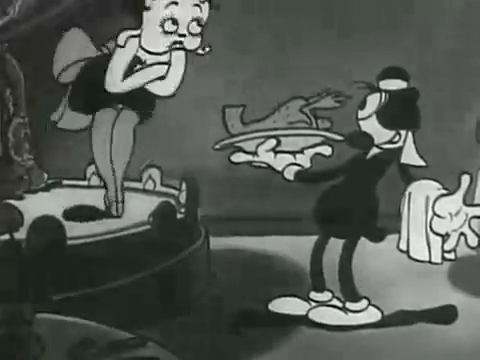 1
1
If you jump ahead to Fleischer’s “Barnacle Bill”, also from 1930, you’ll find this wild scene where Betty is seducing Bill, you’ll see all sorts of distortion in the inbetweens which Grim has maneuvered for Betty’s movements on the couch. Note how well posed his extreme positions are drawn despite the distorted inbetweens, when she is moving.
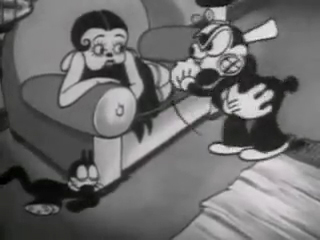 1
1
Look at the beautiful drawings (above) of this character in some of these extremes from this film. The character of Betty isn’t moving whereas Bimbo – I mean Barnacle Bill is all over the place. Yet your eyes are on Betty in that held position.
Now, let’s look at what the inbetweens are doing as Betty gets from one pose to the next. It’s really funny. Grim has found a way to create a sympathetic, adult and female character, yet he keeps her funny with the surface of the animation.
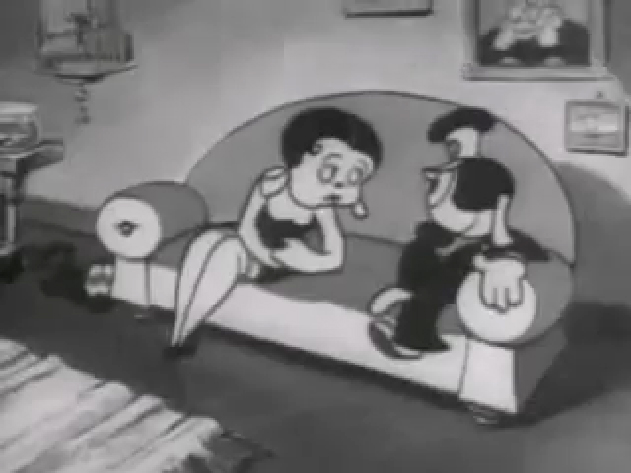 1
1
At times in the animation, Betty’s hand may turn into a claw, but that might be that Grim delivered a rough which was poorly cleaned up by an assistant. Or perhaps the inker just inked from a rougher drawing, perhaps a Grim “clean up” if there ever were such a thing. He worked ROUGH. In fact, that distorted claw of a hand doesn’t matter. It’s the extremes that counted for Grim, and he was experimenting with this animation to see if that really were true.
I’ve remembered over many years an interview with Dick Huemer,* who worked alongside Grim on some of these films. Huemer gets credit for inventing the inbetweener to use in the animation process. It allowed him to turn out more animation and not worry about the many drawings that would paste the scenes together. In that interview, Huemer said that it didn’t really matter what the inbetweens looked like. You could draw a “brick” and it would still work. They actually may have believed this, at that time. Grim is using the inbetweens to get somewhere else in putting the scenes together.
(Tomorrow, I’ll post, again, a scene Grim did for Raggedy Ann with Dick Williams’ clean ups alongside so you can see the variance.)
* In Recollections of Richard Huemer interviewed by Joe Adamson, [1968 and 1969] Huemer said:
- And i decided that I would save all that work of inbetweening by just having a bunch of lines or smudges, just scrabble, from, position to position, When something moved fast. To prove it, I had an alarm clock flying through the air, and right in the middle of the action I put a brick. And vhen they ran the finished
film you didn’t see the brickl It proved that you didn’t really see what was in the middle. But I overdid it.
Animation &Animation Artifacts &Articles on Animation &Richard Williams 20 Mar 2013 05:29 am
Dick Williams’ Notes
- One of the better pluses of working on Raggedy Ann, back in 1977, was the information available to us. There was circulated, there, a book of notes Richard Williams had kept during the lectures Art Babbitt had given at is studio in Soho Square. These still act as a unique bible I have on my shelf. (Unfortunately, these days it’s on a shelf in storage.)
There was also another set of notes. These weren’t 8½ x 11, they were 14 x 17 sheets of paper, and only a few had access. As one of the bosses there, I had access. (Basically, we couldn’t have everyone copying 14 x 17 sheets of paper; that got expensive.)
I think these were notes Dick was keeping for a potential book he’d write. They pulled from everywhere, whether it was Preston Blair‘s book or the Disney after-hours studio lecture notes. There were also notes Dick kept from other pros that had given lectures at his studio. Here’s a good sampler of some of these pages. There’s a Milt Kahl talk, a John Hubley talk, notes on an Ollie Johnston talk (typed by Jill, Dick’s assistant as well as notes of different walks from Dick, himself.
I won’t interpret them for you, but will just dump them on you. So here they are. Make sense of them, as you will:
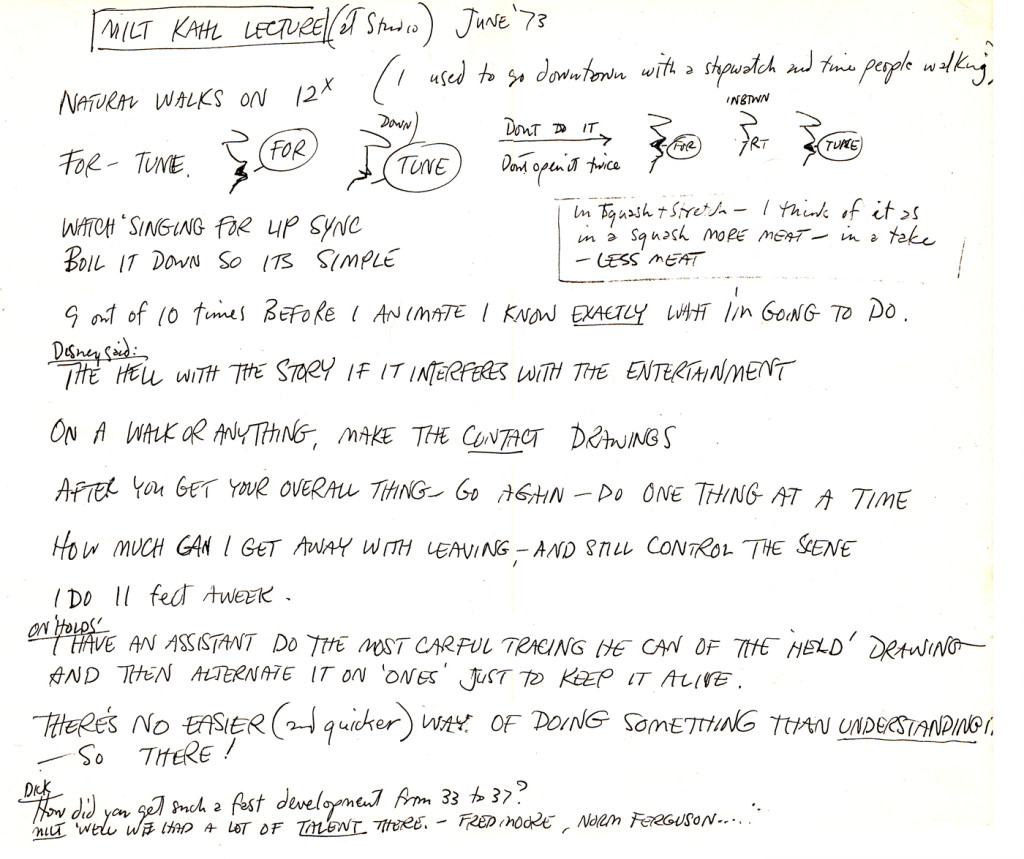 1
1
Commentary 11 Mar 2013 02:09 am
European Animation
I know I’ve written about some of this stuff before (repeatedly), and I hope my take on it here is a bit different. At least I’m leading somewhere different, so please have a bit of patience with the opening.
- When I was a kid, animation was in the dark ages for the general public. By that, I mean there wasn’t a hell of a lot of material available to allow you to know how it was done or learn how to do it. There were maybe a dozen or so books available.
- -
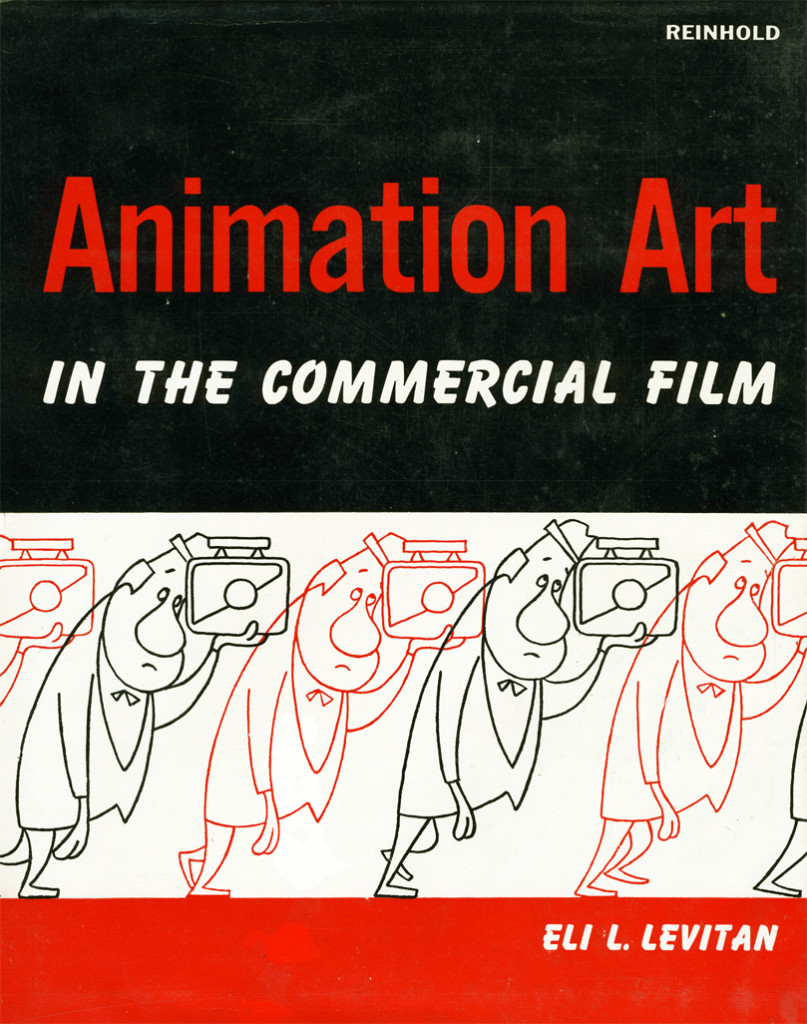 Of course the 40s Rob’t D. Feild book, The Art of Walt Disney. Some great information but not many illustrations. What are there are GREAT.
Of course the 40s Rob’t D. Feild book, The Art of Walt Disney. Some great information but not many illustrations. What are there are GREAT.
- The Preston Blair book, Animation, good and cheap. Very helpful for an amateur like me.
- Halas and Manvell‘s The Technique of Film Animation had more to do with animation as done in Europe, but it is extraordinarily helpful.
- Eli Levitan, an animation cameraman, had written several books. Animation Art in the Commercial Film is one of the better books.
There were a few others. My local library had them all, and I borrowed them endlessly and just about memorized them all. I owned the Preston Blair book (of course and my parents bought the brand new Bob Thomas Art of Animation for me Christmas 1958.
On ABC you had the Disneyland TV show which became The Wonderful World of Color when it moved to NBC. The Mighty Mouse Show was the staple on Saturday morning. Local channels featured Popeye and B&W Warner Bros cartoons.
I was completely intrigued with some silent cartoons that were run on the local ABC affiliate on early Saturday mornings. Every once in a while a sound Van Buren cartoon would pop up or a Harman-Ising MGM cartoon..
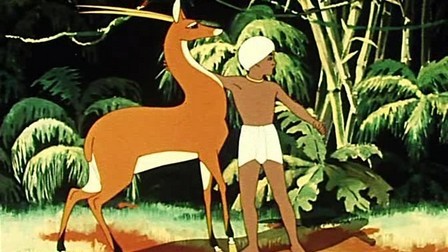 The show that also intrigued me was this horrible “Big Time Circus” starring Claude Kirschner (normally a VO announcer) as a ringmaster who talked to a $5 clown hand-puppet named “Clowny.” They showed cartoons, some B&W Terrytoons with Barker Bill and other early 30s things. They also showed a lot of foreign cartoons badly dubbed into English. They even had Russian features like The Golden Antelope serialized. They had a horrible title on the top of the film and a “The End” title pasted onto the end of the film. I used to tune in to see these B&W European and Russian cartoons. They moved so differently from what I was used to with the cartoons from the US. At 12, I could definitely see the difference and watched closely.
The show that also intrigued me was this horrible “Big Time Circus” starring Claude Kirschner (normally a VO announcer) as a ringmaster who talked to a $5 clown hand-puppet named “Clowny.” They showed cartoons, some B&W Terrytoons with Barker Bill and other early 30s things. They also showed a lot of foreign cartoons badly dubbed into English. They even had Russian features like The Golden Antelope serialized. They had a horrible title on the top of the film and a “The End” title pasted onto the end of the film. I used to tune in to see these B&W European and Russian cartoons. They moved so differently from what I was used to with the cartoons from the US. At 12, I could definitely see the difference and watched closely.
When I started collecting 16mm films I picked up a bunch of these shorts. The timing didn’t get any better.
On my second day at the Hubley Studio, I met the notorious Tissa David who dug into me quickly for my bad inbetweening. She offered to teach me after hours, which I certainly jumped to accept. In that first contact with her, I mentioned that I had a potential job offer from Richard Williams and I might go to England. She immediately said to me, “Oh, please don’t go there. Stay here. Only the Americans know how to animate properly.” After all those years of watching Russian and European cartoons, I understood what she was saying. (I was also working for my real hero, John Hubley, so I had no real plans to go anywhere.) Dick Williams came to me a couple of years later with Raggedy Ann. By then, I was knowledgeable enough to run the Asst. & Inbtwng dept – about 100-150 people.
But then Dick Williams was changing everything. He was teaching his people in England how to animate the way Disney people did it. He brought those people into his studio to teach: Art Babbitt, Ken Harris, John Hubley, Grim Natwick, and others. I believe Williams changed animation throughout Europe. Mind you, the problems of all those years of history is still there, but it’s enormously better.
What do I call “European Animation”? Well, it’s all about the timing. The characters often move at such an even speed that there is no sense of weight or real character movement. Basically, all characters move the same. The Golden Antelope is all rotoscoped, so the movement is on ones and all traced off the live action. You can tell when it’s not; there’s a sameness in the motion. It’s almost like there are no extremes just motion.
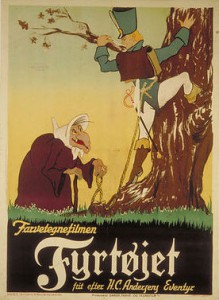 In Europe’s first attempt to imitate the US in a feature, The Tinderbox a 1946 film from Denmark, they were obviously trying to imitate the Fleischers of Gulliver’s Travels. Wild distortions and odd extremes but a lot of the evenly spaced timing. Consequently, with the distorted extremes moving in and out of position at an even pace, it’s doubly peculiar.
In Europe’s first attempt to imitate the US in a feature, The Tinderbox a 1946 film from Denmark, they were obviously trying to imitate the Fleischers of Gulliver’s Travels. Wild distortions and odd extremes but a lot of the evenly spaced timing. Consequently, with the distorted extremes moving in and out of position at an even pace, it’s doubly peculiar.
Halas and Batchelor‘s Animal Farm is so lethargic in its movement, it’s difficult to watch. However, whenever a Harold Whitaker scene pops up, it’s something to study. The guy was a fine animator. His work definitely sands out. He came from the Anson Dyer Studio, and had somehow learned to animate in the US methodology.
The Disney studio was having its effect , though as animators such as Borge Ring pretty much taught himself to go well beyond the basics of he European mold. He was close with a number of the Disney animators and studied Disney films religiously. His own personal style is definitely constructed from the US mold.
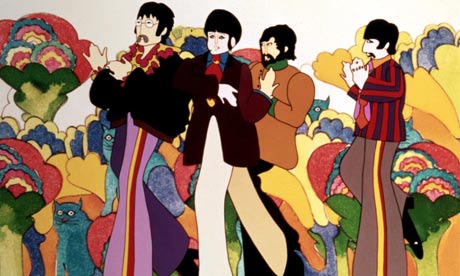 Even through The Yellow Submarine (1968), you see this flat style of animation. Of course, with the more graphic style of George Dunning‘s feature, the even pacing is better hidden in the mood of the piece.There’s also a lot of music that hides the timing problems.
Even through The Yellow Submarine (1968), you see this flat style of animation. Of course, with the more graphic style of George Dunning‘s feature, the even pacing is better hidden in the mood of the piece.There’s also a lot of music that hides the timing problems.
After Dick Williams, began his effort to alter the look of work coming out his studio, there was a big change in the look of work coming from all over Europe. Sure they slipped into and out of the old school of animation, but now they had learned from Art Babbitt and Ken Harris. (I wish they’d had more of Grim Natwick.) Take a look at the marvelous animation done for Bruno Bozzetto in the Ravel Bolero section of his 1977 feature, Allegro Non Troppo. To some extent, now, the best animation worldwide is coming out of England and France, especially from the younger animators.
So let’s take a look at the differences between the two styles..
- The best of the US style can be seen in those dwarfs in Snow White or the Siamese cat song in Lady & the Tramp or Scar in The Lion King. It’s all in the timing.
- The European style is very obvious in Jiri Trnka‘s 2D animation as in The Four Musicians Of Bremen or Spring-heeled Jack. You can see it in about half of Sylvain Chomet‘s The illusionist (the other half was wonderfully done US style), or, as I’ve already written, Animal Farm – the entire movie.
The US tradition came directly from the wonderful work done mostly after hours at Disney’s studio in the 30′s. They learned how to time animation for weight, for mood, for expression and for balance. Bill Tytla, Marc Davis and Frank Thomas were brilliant at it (though they all did it). The word reached outside the Disney studio and others came into the fold: Ken Harris and Bobe Cannon, Grim Natwick and Rod Scribner, Jack Schnerk and Abe Levitow, Hal Ambro and Tissa David. There are another couple of hundred people I could include if we were naming names. These people all mastered their timing. They knew what they were doing and did it as planned. The animation never does what IT wants to do, but it is controlled by the animator and his (her) timing.
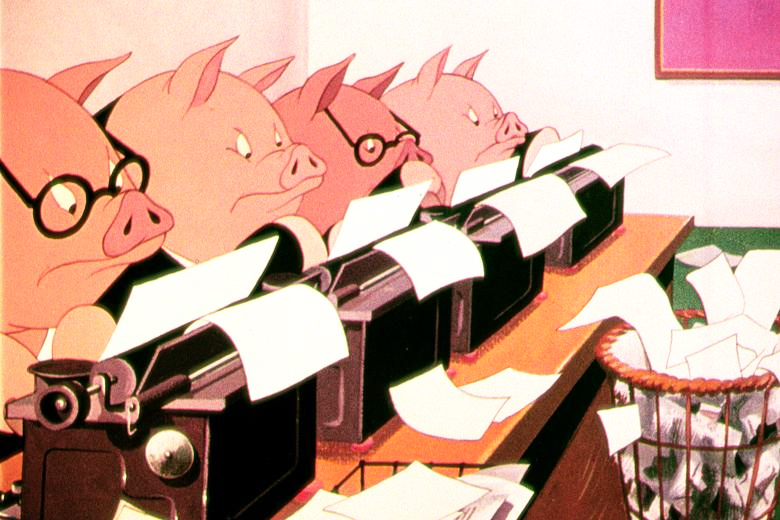 The European style is a very different animal. The timing is flat. It’s usually even paced and moves robotically forward, not always by going in a straight line. The weight is always soft; the emotion is almost nil. The drawings are often beautiful, but there’s no real strength behind that movement.
The European style is a very different animal. The timing is flat. It’s usually even paced and moves robotically forward, not always by going in a straight line. The weight is always soft; the emotion is almost nil. The drawings are often beautiful, but there’s no real strength behind that movement.
Things have changed quite a bit since the advent of Richard Williams and his work, but even there I see it at times. In Dick’s work, I mean, I sometimes see it. (Not surprising since I infrequently see it in Art Babbitt‘s animation. – and lest you think I’m biased, I often see it in my own work and have to rework it. (I’m not trying to hurt anyone here, I’m just reporting what I sense and see and feel.) Just talkin’ animation here. It’s basic and can so easily be bypassed. Animation is ALL ABOUT the timing. Norm Ferguson couldn’t draw very well at all, but he was one of the GREAT animators of all time. There was no even-paced timing in his makeup; the same has to be said of Tytla or Grim Natwick. Babbitt did do it. He was one of our great animators, but he infrequently paced his work in a very dull way. I could give you examples, but I won’t look for yourself, because when he’s good, he’s brilliant. Take the scene he did in The Thief and the Cobbler where the evil Vizier, Zig Zag, shuffles the playing cards.
A great example of what I’m talking about has all to do with Tom & Jerry. Take a look at some of those produced by Gene Deitch out of Czecheslovakia in the early 60s. Don’t compare this with the fully-animated shorts produced by Hanna & Barbera at MGM. No, compare it to the films done by Jack Kinney using a pickup studio. Most of the staff was free lance California employees. Turks without a space to work in the studio. Those Kinney films, badly animated though they are, are pure US-styled animation. The Deitch films are equally, poorly animated, but these also are animated with a European staff that animated the way a European would. The timing is rigidly even in its pacing.
You often get that European feel in the cgi work done today.
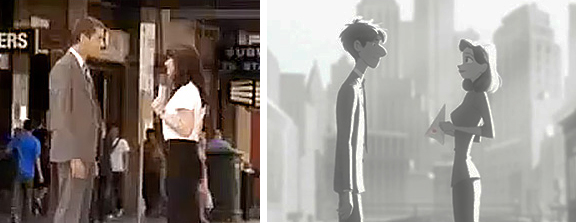
I can’t tell you how many times I’ve seen scenes where things suddenly go slack and move, seemingly, of their own accord in cg films. Perhaps the two arms will complete a motion that was started by an animator, and (s)he will allow the rest of the motion continue on its own to a final rest stop. It’s not animation anymore, it’s just a completion. I do quite dislike this when and if I see it. (Thought, admittedly, too often I’m not paying attention enough.) There’s a scene somewhere in Paperman where the male, standing in profile, has his two arms moving forward to a rest. They move at exactly the same speed, doing exactly the same thing, and it bothers me. Tissa certainly would have scolded me for allowing such a move to happen. I have to hope and believe that that’s what the animator wanted.
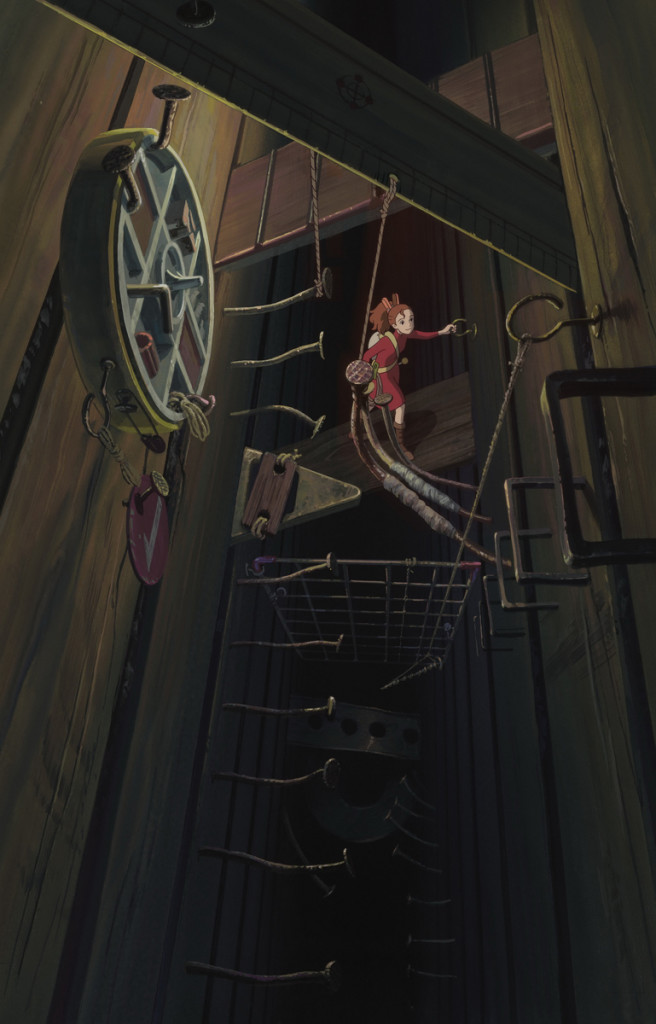 I had actually intended to keep going. One can’t really just say US and European animation styles. After all, there’s also the work out of Asia. The Japanese market, of course, is very different than the rest, and, thanks to what Miyazaki has been doing and his success in doing it, things are changing radically. Where he once blended in with the Anime animation that was all present, things are now changing to more of an emotional, Western appeal. My Neighbor Totoro started something, that changed wildly when he did Spirited Away and Ponyo. When I saw The Secret World of Arrietty, I knew things had changed completely. There was real character animation on the screen. One character was different from the next, and a lot of it had to do with the movement.
I had actually intended to keep going. One can’t really just say US and European animation styles. After all, there’s also the work out of Asia. The Japanese market, of course, is very different than the rest, and, thanks to what Miyazaki has been doing and his success in doing it, things are changing radically. Where he once blended in with the Anime animation that was all present, things are now changing to more of an emotional, Western appeal. My Neighbor Totoro started something, that changed wildly when he did Spirited Away and Ponyo. When I saw The Secret World of Arrietty, I knew things had changed completely. There was real character animation on the screen. One character was different from the next, and a lot of it had to do with the movement.
I was also fascinated with the work of Satoshi Kon, before his untimely death. His work was growing enormously with each and every film. The movies he made were adult in every sense of the word, and they were beautifully constructed, drawn and animated. I still go back to watch copies of his films. ________“Arrietty”
I was going to write about Katsuhiro Ôtomo, but I realize I’ve taken a sidestep. These are directors, and this article is about animators. In short, there is an Eastern style, and I’m glad to see that because of a couple of directors, they’re doing thier own take on the US version of animation character developement. It’s good to see it happening.
Essentially, the world is becoming smaller. Global animation styles are settling in, and I hope there will be a 2D animation so that the job can be complete in a few more years.
Commentary 02 Mar 2013 05:15 am
Shows

- I was asked by Kevin Schreck to introduce, on Thursday at the 92Y Tribeca; it was the second of two evenings celebrating the work of Richard Williams. The three day program was timed to celebrate Dick’s 80th birthday. On March 19th he becomes an octogenarian.
Kevin is the film maker who has produced and directed a documentary about the history of Dick’s magnum opus, The Thief and the Cobbler. Kevin’s documentary, called Persistence of Vision, was unveiled on Friday night.
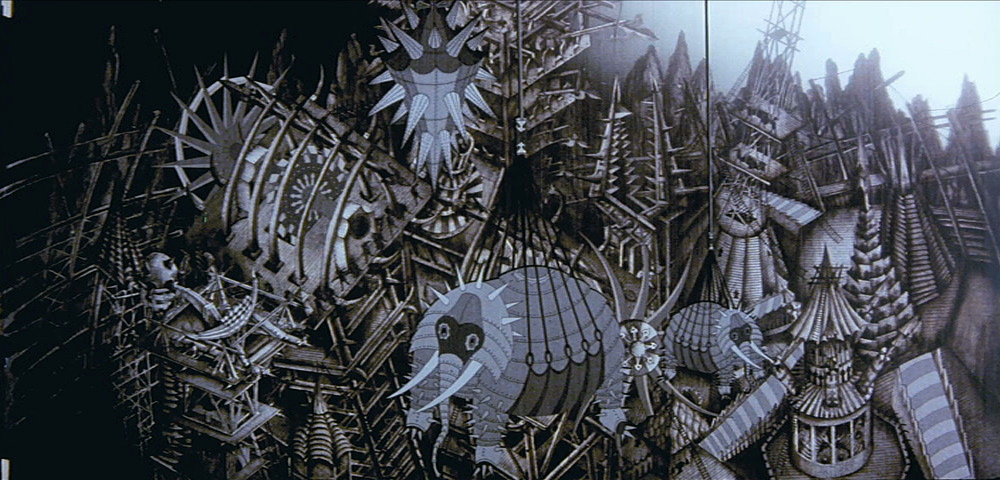 AS I said, I introduced Thursday’s program (commercials, movie title sequences and the short, The Little Island) with a short telling of how I first heard of Dick Williams, then came to meet him, work for him, befriend him and, finally, sit at a distance from him. Dick’s one of the more interesting personalities I’ve met in my life. He’s one of those few characters you get to know who lights up a room whenever he walks in. Energy just overflows the room, and everyone is happier for their presence. In all my years I’ve known possibly three people who filled this description, and it always was enriching for me. Bedazzling.
AS I said, I introduced Thursday’s program (commercials, movie title sequences and the short, The Little Island) with a short telling of how I first heard of Dick Williams, then came to meet him, work for him, befriend him and, finally, sit at a distance from him. Dick’s one of the more interesting personalities I’ve met in my life. He’s one of those few characters you get to know who lights up a room whenever he walks in. Energy just overflows the room, and everyone is happier for their presence. In all my years I’ve known possibly three people who filled this description, and it always was enriching for me. Bedazzling.
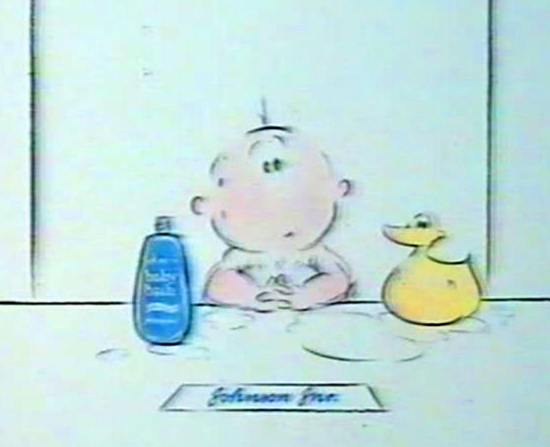 The program included a number of sample reels from Dick’s Soho Square studio. Mostly humorous commercials, all excellently animated. I wish there had been some of the earlier ones mixed in; the Pushkin Vodka commercial shown was not the one I think of as genius; it was the 2nd of two spots they did. The original 2 minute spot was everywhere back in the 70′s; now you can’t see it. The film that was shown is well done but doesn’t soar like the original. Both were designed and animated by Rowland B. Wilson and Russell Hall; they did a bang up job on it. Several of the commercials animated by Eric Goldberg were among those screened; naturally they were funny pieces. There was the cat who uses 8 lives trying to get his hands on a beer product (can’t remember the brand). There was the baby, animated by Russell Hall, and his Q-tips commercial; done in a thick/thin line with watercolor. These are brilliant when compared to today’s live action babies speaking for E-trade.
The program included a number of sample reels from Dick’s Soho Square studio. Mostly humorous commercials, all excellently animated. I wish there had been some of the earlier ones mixed in; the Pushkin Vodka commercial shown was not the one I think of as genius; it was the 2nd of two spots they did. The original 2 minute spot was everywhere back in the 70′s; now you can’t see it. The film that was shown is well done but doesn’t soar like the original. Both were designed and animated by Rowland B. Wilson and Russell Hall; they did a bang up job on it. Several of the commercials animated by Eric Goldberg were among those screened; naturally they were funny pieces. There was the cat who uses 8 lives trying to get his hands on a beer product (can’t remember the brand). There was the baby, animated by Russell Hall, and his Q-tips commercial; done in a thick/thin line with watercolor. These are brilliant when compared to today’s live action babies speaking for E-trade.
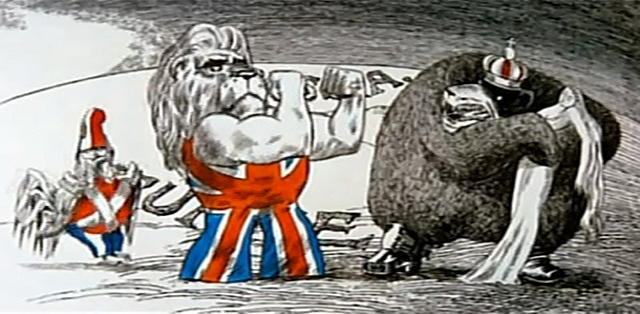 The spots turned into the title sequences for Charge of the Light Brigade. The print for this was significantly better than that of the commercials. This was followed by other title sequences including What’s New Pussycat?, and Return of the Pink Panther. No Murder on the Orient Express newspaper sequences with the glorious music by Richard Rodney Bennett; no Prudence and the Pill. I’ve always had a small problem with Williams’ work on title sequences. It’s hard to read the titles/credits on display. That’s the purpose of the job, and yet the type is always at war with what’s behind it. It’s all beautifully, no . . . brilliantly done. Except for that legibility problem.
The spots turned into the title sequences for Charge of the Light Brigade. The print for this was significantly better than that of the commercials. This was followed by other title sequences including What’s New Pussycat?, and Return of the Pink Panther. No Murder on the Orient Express newspaper sequences with the glorious music by Richard Rodney Bennett; no Prudence and the Pill. I’ve always had a small problem with Williams’ work on title sequences. It’s hard to read the titles/credits on display. That’s the purpose of the job, and yet the type is always at war with what’s behind it. It’s all beautifully, no . . . brilliantly done. Except for that legibility problem.
This show ended with the half hour long The Little Island. A very good print, this was the short Dick did virtually by himself with the help of Tristram Cary‘s strong musical score. The film is at least twice the length it should be, and feels somewhat dated. However, one can understand its success when it was originally screened at the early animation Festivals where it won many awards and brought Dick Williams some fame.
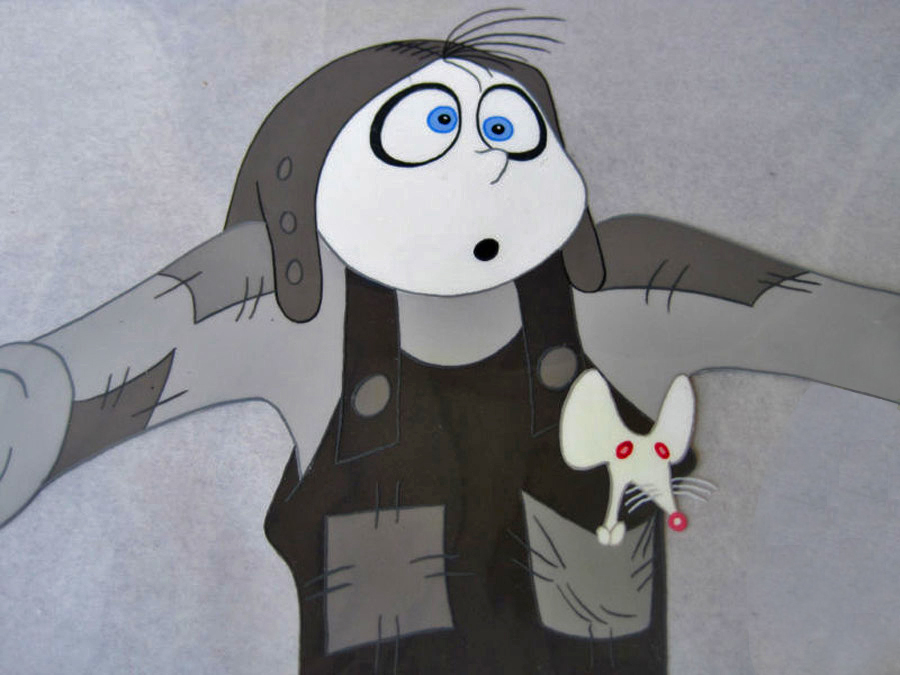 Then last night we saw Kevin Schreck‘s documentary, Persistence of Vision. This was the story behind Dick’s feature, The Thief and the Cobbler. A 70 minute tour back through more than a decade’s worth of history on the making of an animated feature that never really was completed. Some patches and staples were added at the end so it could be released in the most shameful way possible, but that’s the way Dick’s “master piece” ended up.
Then last night we saw Kevin Schreck‘s documentary, Persistence of Vision. This was the story behind Dick’s feature, The Thief and the Cobbler. A 70 minute tour back through more than a decade’s worth of history on the making of an animated feature that never really was completed. Some patches and staples were added at the end so it could be released in the most shameful way possible, but that’s the way Dick’s “master piece” ended up.
Not all of the footage in the documentary was of the best quality. Some of the shots were a bit on the dark side. The information passed on was wholly there, though. Very good. The film gives us interviews with a number of truly fine artists. Roman Modiano, Richard Brett, Greg Duffell, Julianna Franchetti all spoke with Schreck’s camera about their history and involvement with Williams feature. They paint a relatively positive pickture of Dick Williams, though somehow bits of his blustery side come across clearly.
The film only barely touches on Omar Ali-Shah‘s financial games on Dick’s studio. He cooked the books, and didn’t do a very good job of it. Everyone was aware of his discrepencies. A hurtful separation with the Idres Shah (Omar’s brother) who wrote the book on Nasrudin which Dick had illustrated and was now animating as an animated feature. They left with any permission to do a feature starring their character. Dick had to completely overhaul his animated feature and rework the script as well as most of the completed animation. A setback.
The Thief and the Cobbler emerged, and Dick worked his tail off, destroying several marriages in the way of his work. He worked through The Christmas Carol, Raggedy Ann, Ziggy and Roger Rabbit all in pursuit of financial stability. He finally got the budget he asked for to produce The Thief, and sure enough, it wasn’t sufficient. Dick ran out of money without completing the movie, and the insurance company, the Completion Bond Co, was forced to step in and take possession of Dick’s movie, which now belonged to the Completion Bond Co. They hired 2nd rate all the way to rework the film, trying to make what they felt would be a success out of it. A friend who was a final checker on the movie, had to visit the morgue for drawings that could be reused. She came upon a mass of broken and crushed boxes with artwork spilling out covering the warehouse’s entire cemnt floor. This was the artwork that took many hours to color since its rendering was so delicately done in England.
 That, to me, was the sad ending. Tissa David had worked for more than a year animating the twin sisters, Yum Yum and her twin sister, Mee Mee. Tissa was left behind, and Dick cut Mee Mee from the film, reworking some of Tissa’s animation. I sat next to Tissa watching the Fred Calvert version of the film; I was aghast. Tissa was quietly sad as if a friend had died. It was a bit reminiscent of our watching Watership Down together after Hubley had been fired and had died of heart complications. We both cried during the “Bright Eyes” sequence of that film. Watchya gonna do?
That, to me, was the sad ending. Tissa David had worked for more than a year animating the twin sisters, Yum Yum and her twin sister, Mee Mee. Tissa was left behind, and Dick cut Mee Mee from the film, reworking some of Tissa’s animation. I sat next to Tissa watching the Fred Calvert version of the film; I was aghast. Tissa was quietly sad as if a friend had died. It was a bit reminiscent of our watching Watership Down together after Hubley had been fired and had died of heart complications. We both cried during the “Bright Eyes” sequence of that film. Watchya gonna do?
Kevin Schreck captured the feeling of that film -The Thief and the Cobbler, I mean -in all its disappointment. He’s a young film maker, and seems to have caught Dick Williams in this documentary. That’s plenty.
Ursus
Signe Baumane shared this film with me yesterday; a friend of hers in Latvia. had sent it to her, and she wanted to see what I thought. The film went to Clermont Ferrand and 70 other festivals. It’s a real beauty and I couldn’t help but share it with you. I hope you enjoy it as much as I did.
Crood History
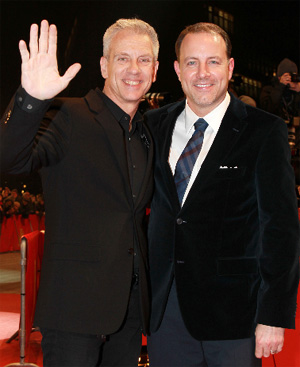 Jim Hill has a piece in The Huffington Post about The Croods talking about its history – when it was to be done by Aardman and was co-authored by John Cleese. How and why it’s changed is revealed in this article.
Jim Hill has a piece in The Huffington Post about The Croods talking about its history – when it was to be done by Aardman and was co-authored by John Cleese. How and why it’s changed is revealed in this article.
Though in one sweeping sentence Hill says, “… Aardman Animations stepped away from its five-picture deal with DreamWorks Animation.” I question whether that’s what happened and if it can be so casually dismissed for the purpose of this puff piece. But it’s Jim Hill, so we’ll not get a full story.
Pictured to the right The Croods directors, Chris Sanders and Kirk DeMicco.
Speaking of Dreamworks, they are performing a “crood” measure. They’ve promised to lay off some 350 of their 2200 employees by the end of the year. I doubt this has anything to do with what is happening in Washington, but certainly that isn’t helping. Perhaps Katzenberg can help get some of the idiots in congress to “lose their jobs” by 2014. Maybe that’d help our economy. This news of the layoffs came from a Hollywood Reporter story and really has all to do with the poor performance of The Rise of the Guardians.
Animation &Commentary &Daily post &Errol Le Cain &Richard Williams 25 Feb 2013 05:28 am
POV
Next Friday, at the invitation of filmmaker-editor-director, Kevin Schreck, I’ll have the pleasure of seeing his recently completed documentary, Persistence of Vision. This is the story of the making of Richard Williams‘ many-years-in-the -making animated feature, The Cobbler and the Thief. I’m not sure of the film maker’s POV, but I somehow expect it to be wholly supportive of the insistent vision of Richard Williams in the making of this Escher-like version of an animated feature. A work of obsession.
It’s the tale of an “artist”, someone who sees himself as an artist, and continually pushes through the world with what would seem to be evident proof of such. After all, this man had single-handedly altered the face of 2D animation in a world that was about to throw it away with all its rich history and artistry and strengths. A medium that had developed through the years of Disney with giant, filmed classics such as Snow White, Pinocchio, Fantasia and even Sleeping Beauty. A medium that had drastically changed to 20th century graphics under the hands of people like John Hubley, Chuck Jones, George Dunning and many others and had just about reached a zenith where it was moving toward something wholly new, something adult.
Instead the medium took a turn in the wrong direction. The economics of television brought us back almost 100 years as films became more and more simplistic and simpleminded in the rush to be cheap. Even the Disney studio went for the poorest subject matter using cost-saving devices to sell their films. Films became shoddier and shoddier, and the economics ruled. The closest the medium would come to art was Ralph Bakshi‘s Fritz the Cat and Heavy Traffic, low budget movies that traded on racy material in exchange for an attempt at something adult, stories barely held together with editing tape. Animation was getting a bad name from every corner whether it was the sped-up graphics of Hanna-Barbera, the reach to the lowest common denominator with poor animation from Disney, or the shock and tell of Ralph Bakshi‘s filmed attempts at what he saw as art.
Williams took a different turn. He went back to the height of animation’s golden era, inviting artists such as Grim Natwick, John Hubley, Ken Harris and Art Babbitt to his London studio to lecture on the rules and backbone of the animation. He brought some of these people to work on a feature that he’d decided to create within his studio on the profits of commercials. These very same commercials financed the training of Dick and his young staff.
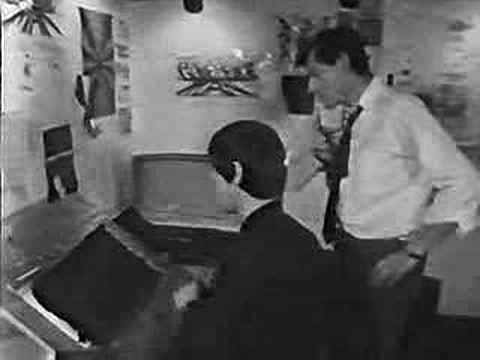 A documentary done in 1966, called The Creative Person: Richard Williams offers an excellent view of his studio. We see snippets of shorts Dick made with his own coin: Love Me Love Me Love Me (1962) or The Sailor and the Devil (1967) wherein we see the training of a young and brilliant illustrator named Errol le Cain. (Le Cain became known for his magnificent, glimmering children’s book illustrations. He was doing most of the backgrounds for The Cobbler and the Thief, and had certainly had a large part in its design.)
A documentary done in 1966, called The Creative Person: Richard Williams offers an excellent view of his studio. We see snippets of shorts Dick made with his own coin: Love Me Love Me Love Me (1962) or The Sailor and the Devil (1967) wherein we see the training of a young and brilliant illustrator named Errol le Cain. (Le Cain became known for his magnificent, glimmering children’s book illustrations. He was doing most of the backgrounds for The Cobbler and the Thief, and had certainly had a large part in its design.)
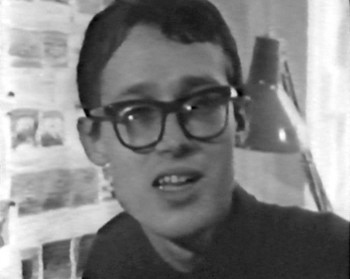 We see in this documentary the first hint of The Cobbler when it was called Nasruddin. It was based on a book of middle eastern tales of a wise fool whose every short story tells a new and positive anecdote. Dick had illustrated several books of these tales with many funny line drawings. The book was written by the Idres Shah who had undertaken a role within the Willams studio finding funds for the feature. Eventually, the two had a falling out, and Idres Shah left with his property. Williams took the work he had done as Nasruddin and reworked it into The Cobbler and the Thief. ________________________________Errol le Cain
We see in this documentary the first hint of The Cobbler when it was called Nasruddin. It was based on a book of middle eastern tales of a wise fool whose every short story tells a new and positive anecdote. Dick had illustrated several books of these tales with many funny line drawings. The book was written by the Idres Shah who had undertaken a role within the Willams studio finding funds for the feature. Eventually, the two had a falling out, and Idres Shah left with his property. Williams took the work he had done as Nasruddin and reworked it into The Cobbler and the Thief. ________________________________Errol le Cain
Meanwhile the work within his studio continued to develop, growing more and more mature. The commercials became the highlight of the world’s animation. Doing many feature film titles such as What’s New Pussycat (1965), A Funny Thing Happened on the Way to the Forum (1966), The Charge of the Light Brigade (1968) led to Dick’s directing a half-hour adaptation of The Christmas Carol (1971). Chuck Jones produced the ABC program, and it led to an Oscar as Best Animated Short.
Through all this The Cobbler and the Thief continued. Many screenplays changed the story and the stunning graphics that were being produced for that film were often shifted about to accommodate the new story.
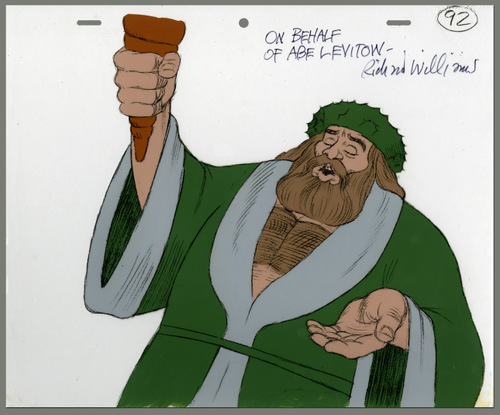 By this time, Williams had developed something of a name within the world of animation. Strong and important animation figures went to his studio to work for periods of time. Someone like Abe Levitow taught and animated for the studio. (His scenes for The Christmas Carol are among the most powerful.) Many of the Brits that worked in the studio and then left to start their own companies were now among the world’s best animators.
By this time, Williams had developed something of a name within the world of animation. Strong and important animation figures went to his studio to work for periods of time. Someone like Abe Levitow taught and animated for the studio. (His scenes for The Christmas Carol are among the most powerful.) Many of the Brits that worked in the studio and then left to start their own companies were now among the world’s best animators.
Williams had the opportunity of doing a theatrical feature adaptation of the children’s books The Adventures of Raggedy Ann and Andy and took it. A large staff of classically trained animation leaders such as Art Babbitt, Grim Natwick, Tissa David, Hal Ambro, Emery Hawkins and many others worked out of New York or LA as the company set up two studios to produce this film. Working for over two years, Dick’s attention was diverted to work away from his London studio, where commercials and some small devotion was given to The Thief by a few of the key personnel working there. Dick spent a good amount of his time in the air flying from NY to LA to NY to London and back again and again. He concentrated his animation efforts on cleaning up animation by some of the masters, rather than allow proper assistants to do these tasks. By doing this he was able to reanimate some of the work he didn’t wholly approve of. Entire song numbers were reworked by Dick as the film flew well behind its budget and schedule.
Eventually, the film finished in confusion and mismanagement, and Dick moved to his LA studio where he continued commercials and began Ziggy’s Gift, a Christmas Special for ABC.
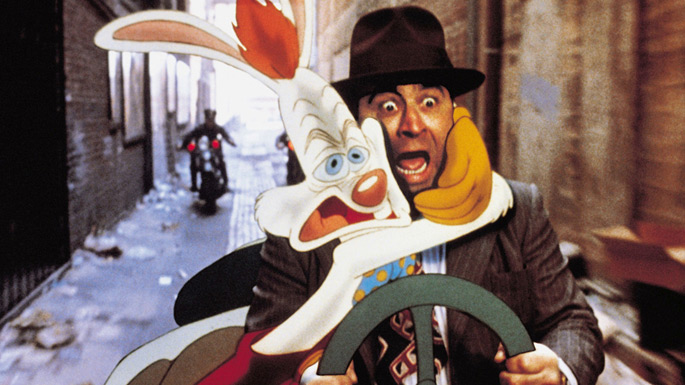 From this he went back to his London studio and did the animation for Who Framed Roger Rabbit for producer/director Robert Zemeckis. He hoped that work on this feature, which won three Academy Awards, including a special one for the animation, would be the triumph he needed to help him raise the funds for The Thief and the Cobbler. Now that he was safely back in his own studio in Soho Square he felt more focused.
From this he went back to his London studio and did the animation for Who Framed Roger Rabbit for producer/director Robert Zemeckis. He hoped that work on this feature, which won three Academy Awards, including a special one for the animation, would be the triumph he needed to help him raise the funds for The Thief and the Cobbler. Now that he was safely back in his own studio in Soho Square he felt more focused.
A contract came from Warner Bros., and the work began in earnest.
Dick’s history wasn’t the best working on these long form films. Chuck Jones replaced him on The Christmas Carol to get it finished when work went overbudget and schedule. Dick was putting too much into it. Gerry Potterton finished Raggedy Ann when the budget went millions over with less than a third completed. Eric Goldberg took over Ziggy’s Gift, the Christmas Special for ABC, to get it done on time. On Roger Rabbit, the live action director stayed intimately involved in the animation after his shoot was complete. When it became obvious that things weren’t going well, he stepped in to complete that film.
In all cases of all of these films, Dick never left. He stayed on working separately on animation or assisting to try to keep a positive hand in the quality of the work that was done.
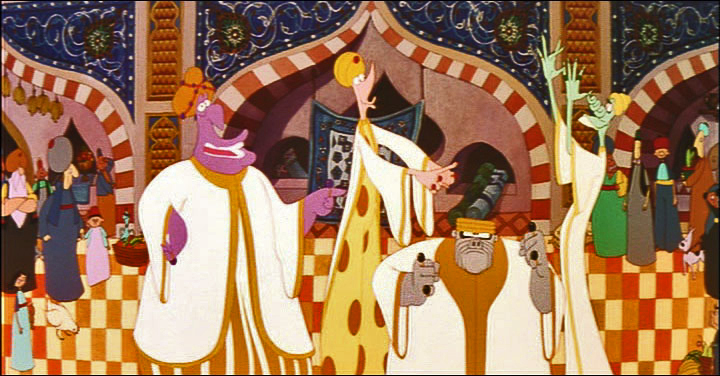 When The Cobbler and the Thief ran into very serious trouble, there was no secondary Director or Producer to come in and complete the work. Instead that job fell to the money men. The completion bond company, essentially an insurance company for Warner Bros. to make sure they wouldn’t lose their money if things didn’t go well, stepped in. They closed Dick’s studio and removed Dick from the premises. The boxed up and carted off all animation work done or in progress. It was all moved back to Los Angeles.
When The Cobbler and the Thief ran into very serious trouble, there was no secondary Director or Producer to come in and complete the work. Instead that job fell to the money men. The completion bond company, essentially an insurance company for Warner Bros. to make sure they wouldn’t lose their money if things didn’t go well, stepped in. They closed Dick’s studio and removed Dick from the premises. The boxed up and carted off all animation work done or in progress. It was all moved back to Los Angeles.
The Weinsteins, through their company, Miramax bought the film at auction and completed it with a poor excuse of an animation outfit they set up in LA. Work was also sent to Taiwan. The script was reworked trying to capitalize on the success of Disney’s Aladdin that had recently opened in the US. If Robin Williams‘ ad libbing could be such a success, imagine how well Jonathan Winters could do repeating that for a character who, in Dick’s original version, had no voice. Now he didn’t stop talking.
The new film failed miserably and deserved to do so. The primary audience, I would suspect, was the entire world animation community coming to look down on the artificially breathing corpse.
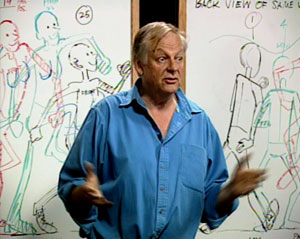 Richard Williams, himself, retired and moved far from the mainstream. He continues to work on small animation bits, but his primary work has been in making a series of DVD lectures revealing how animation should be done. This accompanies a well-received book he wrote and illustrated. Meanwhile, the animation community still hopes that something will emerge from that corner.
Richard Williams, himself, retired and moved far from the mainstream. He continues to work on small animation bits, but his primary work has been in making a series of DVD lectures revealing how animation should be done. This accompanies a well-received book he wrote and illustrated. Meanwhile, the animation community still hopes that something will emerge from that corner.
Dick turns 80 years old on March 19th. He’s still an amazing forceful and exciting personality. I wish I had more access to him (as does most of those who knew him back then.) He’s had probably the greatest effect on the animation industry of anyone since the late sixties. There are still studios thriving today on information they learned from Dick and his teaching.
If you’re unfamiliar with the blog, The Thief, I suggest you take a look.
Commentary 08 Jan 2013 06:41 am
Some Movies I’ve Thought About
- The feature length cut of The Cobbler and the Thief as was assembled by the remarkable Garrett Gilchrist can be found on line:
A beautiful copy of the workprint.
Let me tell you some thoughts I have about this incredible movie.
It’s sad watching it again. I had only the slightest of involvement on the film. It touched my life more than I touched it. I’d seen the documentary on PBS back in the early sixties. The Creative Person: Richard WIlliams. I was impressed. I scoured the newspapers and any other media searching for words about this film or its mad director, Dick Williams. His London studio had sent me a packet they produced full of publicity articles on papers slightly larger than 8 1/2 x 11. I read and reread all those non-bound pages, and they grew dog eared. Williams, his studio and his film was my obsession for a while. It seemed to be the only place where real animation was being done anymore, back in the sixties,.
John Hubley was my hero, and his studio hired me in NYC. It was supposed to be a three day line of employment, but the job ended up lasting the last six years of John’s life.
On the second day there, I met Tissa David. During our first conversation, maybe 15 minutes long, I told her that it was my intention to eventually leave New York to work in London for Dick Williams. (We’d written, and Dick said that he’d see me the next time he came through NY.) On telling Tissa this story, after she had just introduced herself by saying I had done the worst inbetweens she’d ever seen, she – in the most sincere and pleading voice I’d heard – said, “Please don’t leave America. We need you here, animation needs you here.” Or it was certainly something very much to that effect.
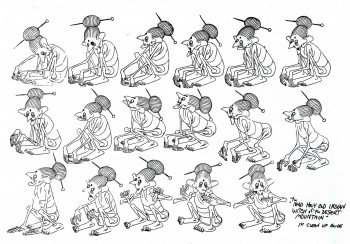 The story never quite worked, the Cobbler’s story never quite worked. I remember once reading the script and thinking it’s a feature length Road Runner cartoon. There was too much madcap humor at the Thief’s expense. I may have been wrong. The film seems to have been made to challenge animators. It’s difficult to animate the old Holy, Mad witch, but if you put her on a swinging basket while she talks, it’s even more difficult. Two uneven and oddly attached ropes makes it an extraordinarily difficult challenge. The weight and balance become everything. That’s what’s been done. It’s that way with every scene or character or motion in the film. If the challenge to the character in the scene can be made more difficult, then do it. Grim Natwick loved the challenge, helped develop the character, and Dick accomplished it.
The story never quite worked, the Cobbler’s story never quite worked. I remember once reading the script and thinking it’s a feature length Road Runner cartoon. There was too much madcap humor at the Thief’s expense. I may have been wrong. The film seems to have been made to challenge animators. It’s difficult to animate the old Holy, Mad witch, but if you put her on a swinging basket while she talks, it’s even more difficult. Two uneven and oddly attached ropes makes it an extraordinarily difficult challenge. The weight and balance become everything. That’s what’s been done. It’s that way with every scene or character or motion in the film. If the challenge to the character in the scene can be made more difficult, then do it. Grim Natwick loved the challenge, helped develop the character, and Dick accomplished it.
This, of course, is not only fine, it’s fun for the very talented animator – animators such as Dick Williams – but the problem is that it doesn’t really advance the story. The animation for this film is beyond complicated and done so extraordinarily well. The more you know about it, the more you realize how hard it was to do and how well it was done.
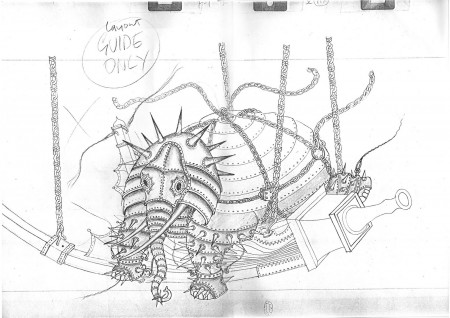
A couple of Roy Naisbit War Machines
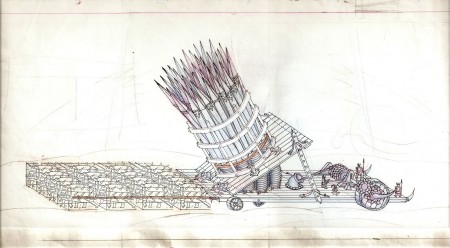
Roy was one of the great Artists Dick introduced to animation.
Today, of course, we have computers that could animate most of the objects in this film. I’m not sure the “War Machine” would be any better, but it would have taken fewer man-hours. All that glorious drawing, Ink & Pt coloring and design was dependent on the perfect timing. The animation. Perhaps in time a computer would’ve gotten it.
In the first third of the film, there are two lovely scenes animated by Tissa David. Both are pencil tests of the princess, Princess Yum-Yum, in the bath. We’re looking over her shoulder and she looks back toward us, where we are off screen. The hair is up in her scenes, appropriate to a bath. In between there’s another pencil test scene of the princess with her hair down, and it no longer looks like the same character. The art is flatter. Tissa’s princess was voluptuous. As a matter of fact, her princess was two. Two mirroring twins who echoed each other in animation (anything to challenge the animator). Princesses Yum Yum and Mee-Mee. At the suggestion of the brilliant Jake Eberts, one of the two princesses was dropped. Mee Mee.
Tissa in working for Dick out of her NY apartment had purchased a Lyon-Lamb machine. Large and a bit cumbersome, this video machine came in the pre-computer days and was wholly a video tape machine. It employed reel to reel tape and was rather large. It had the distinction of being able to shoot something at 24 frames per second and also play back at that speed. After buying the machine, Tissa had built for herself a piece of furniture which acted as an animation stand that could sit alongside her desk. She saved all those video tapes (reel to reel, remember). She intermixed commercial animation she did for R.O. Blechman at the same time. (She needed the commercial work to be able to afford working for Dick Williams. He was self-financing his movie then, and Tissa loved working on his project. It was her only passion for several years.) This occurred for the years immediately following Raggedy Ann & Andy. Tissa had supervised Ann and Andy. I saw it all, I watched Yum Yum and Mee Mee grow. I heard all the stories first from Tissa’s side, then from Dick’s side. I was in a wonderful place in the world.
 I also got to see several screenings of Dick’s developing workprint. Just prior to Dick’s making the Ziggy’s Gift TV special, he’d had a screening of 40 minutes of the feature. Many key people were there, and I can remember a few of them. Tom Wilson (Ziggy’s creator) was there with Lena Tabori. They were a couple, though I don’t think romantically. She was an editor who had developed many big Disney art books for Abrams before forming her own company, Stewart, Tabori & Chang and Welcome Books. She was the daughter of actress, Viveca Landfors. She, Wilson and Williams were the producers of Ziggy’s Gift, though ultimately Dick Williams was pushed out when the budget continued to rise as it did on most Williams films. Midway through production, Eric Goldberg got the chance to take the directorial reins and complete the film in a make-shift studio in LA. It was a packed screening. I sat next to Chuck Jones with Sidney Lumet sitting on my left. We three had great things to say about what we’d seen afterwards. How could you not? The animation, coloring, graphics, everything was extraordinary. There was no hint of a story in the 40 minute presentation; I was starting to notice that. I can’t remember many animation people there, though Willis Pyle was one. Tissa, of course, was there. She was getting to see her pencil tests projected.
I also got to see several screenings of Dick’s developing workprint. Just prior to Dick’s making the Ziggy’s Gift TV special, he’d had a screening of 40 minutes of the feature. Many key people were there, and I can remember a few of them. Tom Wilson (Ziggy’s creator) was there with Lena Tabori. They were a couple, though I don’t think romantically. She was an editor who had developed many big Disney art books for Abrams before forming her own company, Stewart, Tabori & Chang and Welcome Books. She was the daughter of actress, Viveca Landfors. She, Wilson and Williams were the producers of Ziggy’s Gift, though ultimately Dick Williams was pushed out when the budget continued to rise as it did on most Williams films. Midway through production, Eric Goldberg got the chance to take the directorial reins and complete the film in a make-shift studio in LA. It was a packed screening. I sat next to Chuck Jones with Sidney Lumet sitting on my left. We three had great things to say about what we’d seen afterwards. How could you not? The animation, coloring, graphics, everything was extraordinary. There was no hint of a story in the 40 minute presentation; I was starting to notice that. I can’t remember many animation people there, though Willis Pyle was one. Tissa, of course, was there. She was getting to see her pencil tests projected.
In time, things broke somehow between Dick and Tissa, and she was pulled from the project. It broke her heart, but she never once mentioned how or why to me. Dick was like that. He loved an animator (or any craftsman/artist) to death until he didn’t. Eventually, he’d worked up enough venom to decide, finally to split from the person. Things might right themselves again, but most people didn’t even know what was wrong. (The same happened between me and Dick. I know why he stopped caring for me, and I know when we split. I didn’t stop loving him or what he was doing. He came close to animation “Art”, there in the seventies.)
- As long as we’re posting Richard Williams‘ remarkable movies available on-line thanks to the work of Garrett Gilchrist, let me direct you to this one movie title sequence.
Prudence and the Pill was an comedy done in the sixties starring David Niven. It got its share of attention thanks to the title. The “Pill” was in the headlines and had made its way onto many newscasts when Congress legalized the contraceptive for women. Richard Williams studio did the titles and credits for this movie, and one thing stands out about them. Sharing the title with Dick Williams is the incredibly talented artist, Errol LeCain. He is credited as “animator”. The only other “animator” credit listed for this genius of an artist was for the Sailor and the Devil.
Honestly, I’ve been hooked on The Life of Pi. I saw the film in a theater twice, once for myself and the second time I went back to see it for Heidi’s sake. On the second viewing she seemed to love it more than I did. I found some things that bothered me, but I couldn’t really respond properly to them. Then this past week I got a new DVD player, and I tried it out, once the basic part of it was hooked up. The Life of Pi, a screener copy, was played to test run the machine. I was hooked up. I couldn’t stop watching it. All the faults I’d found on the second screening melted away, and I loved it again.
The Mychael Danna music played in my head over and over and over. I watched those opening credits at least another half dozen times. They’re beautiful and magic. It’s still playing in my head while I write this.
I wrote to the Effx house Rhythm & Hues saying I’d like to write about the film and its Effx. I haven’t heard back from them. I’ve been annoying enough about this subject that I received a comment from James Nethery saying he’d contacted a Rhythm & Hues animator asking if he’d be interested in being interviewed by me about PI. Thank you, James. That’d be fun.
For me, this year, the best animated scenes were many of those of Richard Parker, the tiger, in Pi. I was also equally astounded by most of the work of the Gollum in The Hobbit. One is straight cgi; the other is what used to be called “motion capture” and is now something much much more. There’s real feeling in both those films, and in both those films those characters exist. There can be no question of it. In essence I have a theory that this – the work in these two films and others like it – is the real purpose of computer crafted animation. Some people have learned how to make a living by faking little dolls talking, but that work – to me – doesn’t have far to go. It’s all in the writing for those films, and writing lately, especially for animation, is poor. Anmation, itself,
is stunned, stultified, unable to advance given the short sidedness of the “Producers”. This would seem to be the era of its greatest potential growth, but then some of our finest animators are forced into an early retirement. Milt Kahl, Frank Thomas and some others were afraid to retire for fear of animation dying. Perhaps it has.
Commentary &Daily post 05 Jan 2013 08:20 am
Animator names?
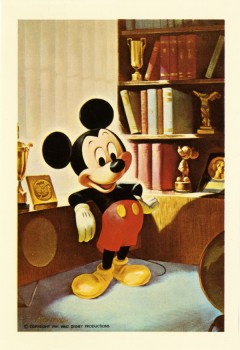 I’ve been an animation fan forever. Back in the fifties (when I wasn’t yet in my teens) I wrote fan letters to Joshua Meador, Bill Justice, and Art Riley. I don’t know if any of them ever received any of my letters, since I always got back a 4″x6″ postcard from Walt Disney thanking me. Mind you, these cards were always interesting and different, so I’m not sorry to have received them.
I’ve been an animation fan forever. Back in the fifties (when I wasn’t yet in my teens) I wrote fan letters to Joshua Meador, Bill Justice, and Art Riley. I don’t know if any of them ever received any of my letters, since I always got back a 4″x6″ postcard from Walt Disney thanking me. Mind you, these cards were always interesting and different, so I’m not sorry to have received them.
In the sixties, Mike Barrier‘s Funnyworld Magazine opened the world to interviews with some real animators. Then you’d start to see similar articles in the likes of Millimeter or Film Comment. Chuck Jones and Tex Avery got lots of attention. I saved and cherished those issues. Hell, I just about memorized them. ASIFA East brought Bob Clampett and a dozen other animators from Yoji Kuri to Frank Thomas & Ollie Johnston to our little New York corner of the world.
 The point is that we got to know who a lot of animators were.
The point is that we got to know who a lot of animators were.
I could tell what scenes Ollie Johnston had done from those that Milt Kahl had done; I can easily identify Bobe Cannon‘s work from Ken Harris‘. (Can anyone but Cannon have drawn with such beautifully rounded lines as can be seen in the lion on the right?
No, that’s purely his work, and it’s there from the earliest right through to Moonbird. Just brilliant!)
{Check out this whole post on John Kricfalusi‘s site in 2006. Gorgeous.}
It became, really, the era of the animator. Many of them were deified by others like me, and deservedly so, even though others remained in obscurity. Watching stars like Dick Williams bring Harris and Hubley and Babbitt to London to train his staff brought fame to the little British studio. Dick soon brought as many famous animators to Raggedy Ann in New York. A star-studded staff assembled, for the first time, for their celebrity and ability and personality. (Star animators rather than star voices. Too bad there was no star writer.)
And Jim Tyer! There’s a whole cult of people who rally around Tyer’s work, and that pleases me. No one I knew, when I was a child, had any idea who Tyer was, but I searched every Mighty Mouse show on Saturday morning TV for a cartoon that had something of Tyer’s work on it. And of course, if you’re going to mention Tyer you have to talk about Rod Scribner. Bob Clampett wouldn’t be the same without Scribner’s scenes. One was East coast, one was West. One distorted the character off all semblance of drawing rules, the other distorted beyond belief (but probably – in his own way – kept the masses the same.)
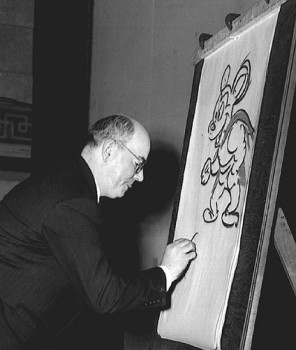
We can all spot his work a mile off.
It’s Jim Tyer
This same rise to fame continued with some of the new guard. Glen Keane and Andreas Deja led a league of youngsters such as Eric Goldberg and Ruben Aquino and many others to small fame within the industry as the new golden era came to the Hollywood studios.
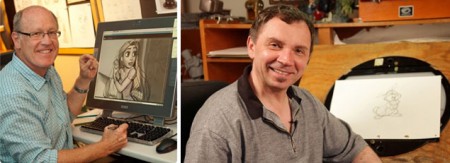
Meed I identify? Glen Keane & Andreas Deja.
Any good student can list off dozens of such names and can tell you what scenes they’ve done. The point that I’m ultimately getting to is that they’re all 2D animation. Where are the cgi lists of names? Where are the heroes from Toy Story and Monsters Inc. Not the directors. We all know who Brad Bird and Pete Doctor are; we know John Lasseter from Andrew Stanton, but who actually did the animation of some of those many scenes.
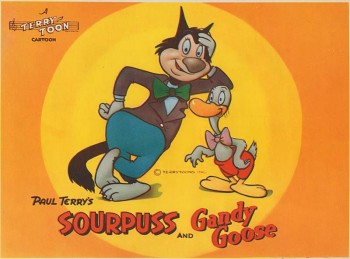 The names are on the credits just as Frank Thomas‘ name is on the credits of Bambi. But I can tell you immediately that Thomas did the scenes of Bambi ice skating, yet I don’t know who did the scene of Woody getting resentful, as Buzz Lightyear gets attention from the other toys. I know that Fred Moore did the scene of Lampwick turning into a donkey in Pinocchio, but I don’t know who did Merida’s mother, Elinor, in Brave. The scenes where the mother is transformed into and acts as a bear are beautifully animated, but the origin of those scenes seem anonymous. I don’t have the slightest clue as to who did them.
The names are on the credits just as Frank Thomas‘ name is on the credits of Bambi. But I can tell you immediately that Thomas did the scenes of Bambi ice skating, yet I don’t know who did the scene of Woody getting resentful, as Buzz Lightyear gets attention from the other toys. I know that Fred Moore did the scene of Lampwick turning into a donkey in Pinocchio, but I don’t know who did Merida’s mother, Elinor, in Brave. The scenes where the mother is transformed into and acts as a bear are beautifully animated, but the origin of those scenes seem anonymous. I don’t have the slightest clue as to who did them.
Grayson Ponti is one of the few who have sites that have praised some excellent cg work, and I can’t be thankful enough for his attention. Check out this post for a sample, but that was written a couple of years ago. We need more frequency and more currency.
I’ve made this complaint before. I talked about Glen Keane‘s work and got lots of hate mail. I said I was trying to learn who did which scenes so that I would know the better animators from the average ones. There were a couple of people who commented on my site and led me to a name or two. But not much changed, not really. I’d very much like it if some of you would comment here and tell me of animators I should be watching. Give me names of people who you think have done some brilliant work in cg films. Tell me the animator, tell me the scenes and I’ll try to offer some appropriate attention.
I don’t have access into the world of the cg artists and animators. I do know a few 2D artists who are working within that world, but it’s the animator who works exclusively in the medium I want to notice and give a little attention to. I need your help. I cannot do it if I don’t know who those animators are at Pixar, Dreamworks, Blue Sky, Disney, Sony and other places. If I don’t know their work I can’t give them credit.
Honestly, for me this year the best animated scenes were many of those of Richard Parker in The Life of Pi. Rhythm and Hues did the work.

This scene knocks me out every time I see it. Pi is trying to
train the tiger, Richard Parker, and the tiger kneads the wood
of the boat (as any house cat would knead a blanket or its
owner, while accepting the comments of his teen overseer.
I’ve contacted the EFFX house offering to give them any attention on my Blog that they’d like from me. Publicity is publicity. (Of course, there’s been no response, surprise, surprise.) Regardless I’m going to continue promoting this film. I love it. But I’d like to add animator names and key art people responsible for the great work. I need them to contribute to get that part right.
I was also equally astounded by most of the work of the Gollum in The Hobbit. One is straight cgi; the other is what used to be called “motion capture” and is now something much much more. There’s real feeling in both those films, and in both those films those characters exist. There can be no question of it.
Now, I’d like to know who is actually doing the creative work. behind the Pixar, Blue Sky and Dreamworks films. I want to talk with people from SONY or other studios. I have a lot of questions and I want to give focus to some individuals who deserve it.
Curran W. Giddens worked on Horton, Cars 2 and Monsters University. What can he tell me about animation?
Raffaella Filipponi worked on The Croods, Shrek and Over the Hedge. She’s freelanced a lot and is that how theses studios work?
Dave Hardin worked on I am Legend, Alice in Wonderland and Turbo. Can he learn the “art” part moving from job to job?
These people were chosen at random. I don’t know their work even though I’ve seen it. Is there a point when THAT will turn around? Do you have to keep on the move to keep working? Is it time to start promoting responses? We’re not working at Disney on a 15 year job that allows you to move from feature to feature without it hurting you attitude, never mind your work?
Perhaps you think (as I sometimes suspect) that no single person can be given credit for “animating” since so many people have their hands on the steering wheel trying to move those characters forward. If so, say that. If you think there’s a team of people that work wonderfully together, I’d like to know. Essentially, I’d like your help continuing this post. If you don’t want it to be in the comment section of this article but would like to add to the follow-up post I’m going to do, email me. msanimation@aol.com is the best address; it’s the place I check most often. Write as short or as long as you like. If I have to edit it I will, and I’ll let you know when it’ll be posted so you can see it as soon as possible.
Commentary 25 Dec 2012 06:15 am
God bless Us Every One!
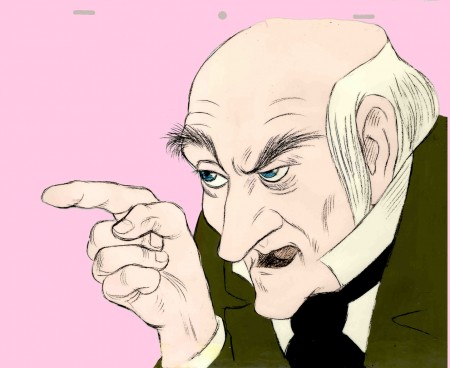
“God bless us every one!” said Tiny Tim, the last of all.
This was a hand-me-down post I’d done my very first Christmas on-line. It’s still a beauty of a cel I own.
It was from a scene Richard Williams animated for his Christmas Carol. The drawing was done on cel not on paper with a mars omnichrome pencil. Hence, the inking is Dick’s, as well. Dick’s tightly strung version of the story is still available in old vhs copies. You can also find the entire film (in three parts) on The Thief Archives on YouTube, and it’s still a beauty.
I remember Dick having a conversation with me about the brilliant animation Abe Levitow did on this film, and, indeed, I agree. In a film filled with stunningly beautiful animated illustrations, my favorite character animation was done by Levitow. The sequence wherein the ghost of Christmas Past opens his robe to reveal “ignorance†and “want†is the capper of the show.
The film, I think, done in 26 minutes is a little too rushed to properly tell the Dickens’ story emotionally, and it’s an emotional story. What’s there is as brilliant as anything Dick had done. In some ways, the artwork reminds me of the cross-hatched animation his Soho Square studio did for The Charge of the Light Brigade. (In fact, when I first saw the show in 1971, I wondered whether some of the birds in Christmas Carol were reused from Charge. I never learned the answer.)
David Nethery has posted a cel from Abe Levitow’s sequence – probably my favorite scene in the film comes from this sequence. It’s the scene where Christmas Present moves back his robe to reveal the two children – “ignorance” and “want”. I think I disappointed Dick when I told him this years ago and hadn’t named one of his scenes. Given the way Dick worked on Raggedy Ann, I’d guess he did the cleanup on these scenes as well.
As limited as the animation is on Magoo’s Christmas Carol, it’s still probably one of the best versions of the film ever made. Actually, the Magoo version is probably tied with the 1951 Alastair Sim version of the film.
I wish you all a Merry Christmas full of the kind of joy Scrooge finds when he wakes up.
“I am as light as a feather, I am as happy as an angel, I am as merry as a schoolboy.
I am as giddy as a drunken man. A merry Christmas to everybody.
A happy New Year to all the world.”
Commentary &Tissa David 05 Nov 2012 07:27 am
Speeches
At the memorial service for Tissa David five people gave speeches. I have some of those talks and am posting them here. I also have some photos that I’ll post with them. The photos are identified at the end of the post.
The entire evening was hosted, essentially, by Tissa David, herself. A 90 minute video shot at NYU has Tissa talking about her career and animation, in general. I’ve chosen a lot of clips from this video. Our entire program starts with Tissa talking to the audience about her love for animation. Short clips then precede every section of later film clips screened, and the very last word of the evening is also Tissa’s.
John Canemaker was the first speaker:
- Sunday in the Park with Tissa.
I walk across Central Park at noon to Tissa’s residence on East 83rd Street, a cozy one-bedroom apartment that always smells of baked apples and spices. It’s where she has lived since coming to New York from Paris in 1956; and that’s the year she began working as assistant to master animator Grim Natwick at UPA Studios, then located on Fifth Avenue.
It is a perfect autumn day: crisp and cool, trees in full-color spectrum, bright sunlight. The New York City marathon is in full swing. Barricades, crowds cheering the runners, detours to get you where you need to go. Friendly, happy people everywhere. New York City at its gridlocked best!
Tissa is waiting patiently outside her building, age 90 and ready to go. She wears a white peaked cap, purple/pink sweater and a stylishly long, beige raincoat over wool slacks and shiny black shoes. And she holds a rubber-tipped black cane.
She attended Catholic mass this morning, as she does every day at St. Ignasius Loyola, a church around the corner on Park Avenue run by Jesuits. As is our custom, I lean down to air-kiss one cheek, then the other, saying, “in the European manner.” She smiles and mimics me: “Yes. In the European manner.”
She takes my arm as we walk very slowly toward the Metropolitan Museum of Art two blocks west of her apartment.
She expresses interest in seeing the new Met galleries for “Art of the Arab Lands.†Both sides of her family are Armenian and the rugs of the Arabs stir her, she says.
“Have ever been to Spain?†she suddenly asks.
“Barcelona,†I answer.
“Barcelona is not Spain,†she responds. “It is — Barcelona. I mean a city like Granada, such a beautiful city. The Moorish influence in the city’s architecture and art.â€
Tissa has strong opinions about everything, especially art. I remember some years earlier running through a gallery at the Met containing one of Damien Hirst’s dead animals in formaldehyde, trying to keep up with Tissa as she hissed like a cobra: “Diss-gusting! Disssssss-gusting!â€
Her tastes are eclectic, but she maintains a special passion for Giorgio Morandi, who once said, “Nothing is more abstract than reality.†There is something in Morandi’s quiet, reclusive, deeply thoughtful, and pared-down paintings that speak to her on both personal and professional levels.
Today, however, instead of entering the museum she prefers that we walk; or, as she pronounces it in her soft Hungarian accent, “ve vauk.†Passing windows containing the Temple of Dendur, we pause. The slightly uphill route winds Tissa and she points her cane toward a cement wall. We sit watching marathon runners dash past, cheers erupting from the young crowd around us who greet the exhausted competitors, who have run for hours through all the boroughs and down Fifth Avenue and into the park for a finish near Columbus Circle.
A runner in a Superman costume hobbles by. Tissa is enjoying everything about the moment and the day, and so am I.
We talk of mutual friends. She remarks how happy she is that Michael Sporn is working on a new film. She says how much she loves Emily Hubley’s feature, The Toe Tactic.
Emily’s father, the legendary animation designer/director John Hubley, defied sexist barriers against women animators in the 1950s and 60s by hiring Tissa to animate several prestigious commercials and shorts. Tissa loved working for him, even if, she candidly notes, he was “cheap†when it came to salaries.
After ten minutes or so, we continue down the path and sit on a bench in the sun near Greywacke Arch, as runners gallop and limp across the bridge.
Inevitably, Tissa speaks of her longtime mentor Grim Natwick. And soon comes the mantra that is well-known to all her friends: “I really learned everything I know about animation from Grim.â€
She learned her lessons well. After Natwick retired, she slowly became recognized as one of the world’s great animators, and a pioneer who forged a brilliant career in a male-dominated industry. Charm, vivacity, female sensuality radiates from her superbly staging and well-timed animation, which is weaved into an admirable economical style. “You don’t do many drawings, “ she often advised novices, “but you know how to use them.â€
She thinks about animation constantly. She wonders how she would animate the Met’s splashing fountains. She ponders the numbers on digital clocks, which change shape instantaneously.
“I stare at the numbers,†she says, “and think about how I would animate the change from one to the other.â€
“It isn’t fully metamorphic,†I suggest, “but a decision about where the animator would ease into the new change.â€
Tissa thinks about that. “I would make the inbetween drawing closer to the ‘old’ number before the change,†she decides, “so there is a snap into the new number.â€
I ask Tissa if she ever wanted to marry or was in love. “Oh yes,†she answers. “I was in love many times and wanted to marry a doctor. But I was glad that he was shot by the Russians.â€
Seeing my shocked expression, she quickly adds, “I mean that it was better that I never married him because I would have quickly been miserable and it would have never worked out.â€
What about Grim?
Laughing, she says she loved him and he loved her, but it was never a romantic love. “He was my teacher. He was like my father.
“The greatest love of my life,†Tissa admits, “ was the art of animation.â€
She reflects that parts of her life have been hard. I assume she’s referring to the 1944 siege of Budapest, and her daring escape from Communist Hungary, or difficulties through the years finding her way as a female artist.
But she is thinking of more recent and personal troubles. “Between 2000 and 2010,†she explains, “I lost two brothers, two sisters, nephews and a niece. The loss of so many loved ones was almost overwhelming. I’m still angry with my younger sister Margit for dying and leaving me. She killed herself with smoking,†Tissa explains with bitter sadness.
We make our way up Fifth Avenue, then turn eastward toward her apartment.
“Thank you, John. It was really great to get out and valk.â€
I thank her for the opportunity to escape my cloistered work habits.
“You’re a long distance runner,†I say, “like the marathon racers.†She smiles and reminds me that I wrote that line in 1977 as the heading of her chapter in my first book The Animated Raggedy Ann & Andy. I don’t remind her that the full title was “Tissa David: The Loneliness of the Long-Distance Animator.â€
At her apartment house, we air-kiss “in the European manner.†My offer to help her down two steps to the front door is refused.
“I can do it,†she insists.
And she did.
This talk was followed by clips from the Hubley films:
Cockaboody
Eggs
Everybody Rides the Carousel (the Meryl Streep sequence)
Howard Beckerman followed John Canemaker
- Tissa David
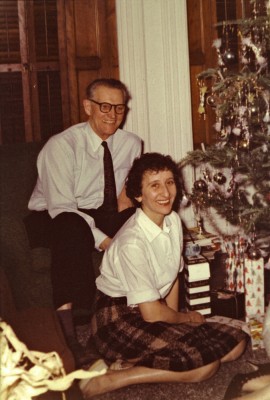 Tissa, after working at Paris based studios, entered New York animation in 1955 at UPA situated diagonally across from the Museum of Modern Art and John and Faith Hubley’s Storyboard, Inc. It was the right place for her.
Tissa, after working at Paris based studios, entered New York animation in 1955 at UPA situated diagonally across from the Museum of Modern Art and John and Faith Hubley’s Storyboard, Inc. It was the right place for her.
There had been few women animators in New York in past decades but, among the men, the held opinion was that women couldn’t do the job. There was also a general attitude that the craft was dominated by Americans. To them animation was a trade for which females and foreigners need not apply. UPA, however, was a progressive studio where the staff included various minorities and nationalities. As one talented African-American artist remarked, “When you walk in here you feel comfortable and welcomed.”
Tissa was greeted by animator Grim Natwick. His European art studies long behind him, he was the choice crew member to interview the then English challenged Tissa. Natwick was direct, ___________Tissa and Grim at Christmas
“What do you think of animation?”
Tissa hesitated , then replied, “Animation is animation.” That satisfied Natwick. Tissa was given a try out on a character from the studio’s popular Piel’s Beer commercials and then hired. The brief meeting with Grim was expressly important because the film that inspired her to get into animation was Disney’s Snow White and the Seven Dwarfs for which Natwick had animated 80% of the lead character. Tissa became Grim’s assistant beginning an association that lasted 35 years.
In time, Tissa became an animator in her own right at local studios giving life to TV commercials. Later came requests from producers with a broader range of diverse characters. These included John and Faith Hubley, R.O. Blechman and Michael Sporn all who came to depend on her animation skills and unique intellectual qualities. Tissa entered a legacy laid down by earlier European animators, illustrators and designers whose influence profoundly effected American cartoons. Working at Disney and Fleischer Studios, their affinity to old world castles, cottages and colorful personalities added credibility, charm and warmth to animated features.
Tissa also played an outstanding role in the ASIFA-East chapter. She organized and corralled the membership lists and dues collections. This was at a time when new graphics guilds were entering the field with lists of 2000 or more, but Tissa proudly managed our 250 or so enthusiatic members.
She was a prime promoter and facilitator of the ASIFA-East Film Festival, and tabulated the voting results as well as commanding the arranging of the event’s refreshment tables. Under her discriminating gaze many of us schlepped wine bottles and tubs of cheese.
I worked with Tissa at various studios around the city and remember a gratifying moment one rainy day when she and Grim came to one of my classes. They had gotten lost in SVA’s internal maze, arriving late and dripping wet. Though tardy, they added substance to the class by answering questions and giving weight to the realities of the field. To the familiar student concern about whether the character of Snow White was traced over live-action actors, Grim, chalk in hand, sketched Snow White to clearly illustrate why her cartooned proportions didn’t allow for rotoscoping.
There’s one anecdote regarding Tissa that I’ve repeated many times, but it still warms my heart, so pardon me if you’ve heard this before. I feel it’s worth repeating since it indicates Tissa’s warmth, humor and life-energizing spirit that rose above everyday twists and turns.
Tissa often traveled to Europe to see family and to animate for small studios. She also had a country house in Southern France. In the spring of 1974, while working in Holland, she contacted Iris and I about attending the animation festival in Zagreb. Her suggestion was that we meet her in Paris a week before the event. She kept a small Volks station wagon there and proposed that we drive across Europe to Zagreb. We accepted gladly. It would be a wonderful journey with a great guide. After a night in Paris we drove south through agrarian countryside evoking the colors of Van Gogh and other post impressionist painters. We stopped in a small town so Tissa could check out her French country place and then we found a small, inexpensive hotel for the night. Tissa suggested that Iris and I take a back room and she a front room. Our lodging was simple, but when we opened the shutters to let in the good night air, we saw the shining moon behind silhouetted castle towers. We slept soundly.
The next morning at breakfast we wondered if she had slept well. “Oh it was terrible!” she replied, “Big trucks rattling past my window all night!” We traveled on through southern France and into northern Italy. One late afternoon we arrived at a local hotel and prepared for a night’s rest before entering Venice. We agreed that this time Tissa would take a back room and we a front room. We slept soundly.
In the morning came our question,” How did you sleep?” It was terrible!” she replied, “There were people playing guitars and singing all night in the courtyard!”
Tissa David will be remembered as a person of taste, humor, artistic skills and a wide understanding of people and the world in general. She observed and interpreted things in a private way. She appreciated much but was opinionated and disdainful of things that didn’t meet her standards. Tissa was a dedicated animator on all manner of productions from workaday TV announcements to celebrated award winners. Though a very private person, she was a friend and mentor to many. She was a treasure in our midst. For all of us who knew and admired her, she will be missed.
Howard’s talk was followed by a clip from Raggedy Ann and Andy
her Candy Hearts and Paper Flowers sequence.
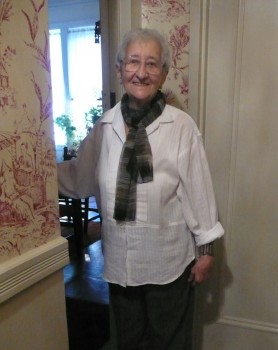 R.O. Blechman was the next speaker. His short talk was planned but spoken off the cuff, improvised. There’s no transcript of it.
R.O. Blechman was the next speaker. His short talk was planned but spoken off the cuff, improvised. There’s no transcript of it.
He started by quoting a poem Tissa liked by T.S.Elliott in which Tissa had substituted the word “animator” for “poet”. Bob also told the story of an article about his show Simple Gifts in which he called the 5 designers, “Artists.” Bob was surprised that Tissa had confronted him by telling him that she was an “Artist” yet there was no mention of her in the promotional article.
Bob’s talk was followed by clips from his studio:
3 commercials for:
– Perrier
– Banco
– WQXR radio
a clip from a promotional trailer for Candide, a film Bob sought to make as a feature.
a clip from The Soldier’s Tale, Blechman’s Emmy winning adaptation of Stravinsky’s work.
Candy Kugel was the next speaker.
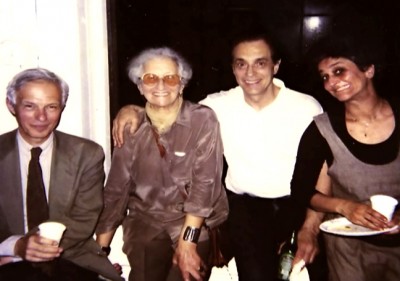 Tissa was my role model—a pathfinder. When I entered the animation industry in the 1970’s there were no other female animators beside her and I was experiencing the same sexist attitudes as she did. And I was in awe of her ability—her fluid line and acting. And finally, I was always grateful for her introduction__________(LtoR) Blechman, Tissa, Vince Cafarelli, Candy Kugel
Tissa was my role model—a pathfinder. When I entered the animation industry in the 1970’s there were no other female animators beside her and I was experiencing the same sexist attitudes as she did. And I was in awe of her ability—her fluid line and acting. And finally, I was always grateful for her introduction__________(LtoR) Blechman, Tissa, Vince Cafarelli, Candy Kugelto international animation and ASIFA.
The first time I was introduced to Tissa was on the telephone in the summer of 1972. I was about to go to Italy for my last year of art school after spending summers interning at Perpetual Motion Pictures.
My boss, the designer Hal Silvermintz, told me that Tissa knew everyone in Europe and she could give me the names of studios so that I could visit them while there. She did, and I did – in Rome, Zagreb and Budapest. And then, since Annecy would have its festival that June, she encouraged me to go and gave me the address to write for certification.
I did go to Annecy and it opened my eyes to international animation in a way I could never have imagined before. There was no internet then, no DVDs and no video collections—the only way you could see these movies was projected in a theater. And I do remember briefly meeting Grim Natwick (who drew me a Betty Boop) and Tissa.
When I returned to New York, it was a bad time for animation so I went to Los Angeles to try my luck there. In New York I had had the good fortune to be treated well by my bosses—my main responsibility was to help the designer.
I had some rudimentary animation experience, but the real animation was done by experienced animators, and they came from a culture of secrecy.
In LA I went to Disney with my “reel†and portfolio and found a whole other set of obstacles. The front gate passes had “Mr.†printed on the guest line. This was during the feminist movement and I jokingly said to the woman behind the window—“I guess you don’t see very many women hereâ€â€”she scratched off the Mr and roughly handed it back to me. I met with 3 men, including Don Duckwall. They told me I drew nicely but that women just don’t have what it takes to be an animator. Women lack timing. Maybe I should consider becoming a designer or background artist.
“But I want my drawings to ACT!†I protested. They smiled and shook their heads.
In the end, I returned to work fulltime at Perpetual. I was determined to learn how to animate well. I got to know Tissa through ASIFA and she offered to help me.
Perpetual picked up a project that had an incredibly low budget, so they gave it to me. Whatever I could manage would be enough. Vincent Cafarelli had recently started freelancing there, and although he was open to helping me, he encouraged me to seek out Tissa’s advice. They had worked together at UPA and he had great respect for her. He even told me I flipped like her.
Tissa invited me to her home and she demonstrated some things. And gave me homework. I went a few more times—I wish I could say that I was a stellar student, but I’m afraid her criticism, although completely deserved, was too biting for my fragile ego.
She was my idol—I loved her work – her beautiful line and her acting. I respected her immensely—but I think I must have been a great disappointment to her. At that time, I was the only girl working her way to become an animator in an established animation studio in NY. I imagine she was hoping for a protégé equal to her talents.
But even without the lessons we remained friends. She followed my career closely and we worked together in ASIFA.
We both understood the difficulty in working in a “man’s profession.†I was criticized by the ink and paint department for not being one of the girls—I was a guy because I used a pencil and not a brush. Outside of Perpetual there were animators and assistants who thought it wrong of me to take a man’s job. Some kiddingly said they would “break my fingers.â€
I admired Tissa even more, knowing exactly what she had been through.
But we never spoke about it after our first meeting at her apartment: I gingerly asked her about how she dealt with the male animators—their practical jokes, the macho culture–were there rumors about her and Grim? She looked at me harshly and waved her hand. Who needed to complain—it was just part of the job.
I will miss Tissa—her generous spirit, her biting wit and her talent. There are too few of them out there.
Candy’s talk was followed by clips from 3 films done for Michael Sporn Animation:
Lyle Lyle Crocodile
The Red Shoes
The Story of the Dancing Frog
Arlane Nelson was the next speaker.
- As Michael said, I am one of Tissa’s nieces. An interesting side note, Tissa was one of 10 children, 7 girls, 3 boys. In my generation, the next one, there were only a total of 3 girls among all the nieces and nephews.
I’d like to begin with an email one of my Hungarian cousins sent me:
“Tissa was known to love music, and we had talked a lot about our favorite performers: Horowitz, Goild, and many other artists. However one thing that is not common in elderly people, is to be open to new things, as Tissa had been. Once I saw a movie about the life of Manuel de Falla, which has a lot of music inserted, one even recorded during his short life. The recording is very interesting because when Falla wrote his masterpiece, El Amor Brujo, he wanted to reject it because the passion radiating from the piece is in total contrast with his deep catholic faith.
Manuel de Falla, just as Kodaly did, collected folk music, the music of the flamenco playing gypsies. El Amor Brujo totally gives back this surreal feeling. In the movie, in order for the illustration to be perfect, two songs, that are accompanied by a large orchestra, were sung by a young female gypsy singer with the technique typical to flamenco. The passion radiating from the recording is scary. I showed it to Tissa who said that this woman is like a storm. And she started telling me stories about being in Andalusia, listening to flamenco music, and how much she liked it.
The other memory is connected to flamenco as well. Many people think that they like this musical style, while they only meet the civilised versions. I have watched Saura’s movie, called Flamenco in which there is a part when two old gypsy men sit on a chair and sing without music. One of them has golden teeth, the other one has silver teeth. This is of course not singing according to European standards, this is rather some endless, sharp, painful, and aggressive shouting, confined among borders. As far as my experience goes, only a few can understand this deepness of art. Tissa understood it, we talked a lot about it later on, and she pointed out the complicated symbols in the text that I had missed on my own.â€
Anyway, I live in the Washington metropolitan area and as such, we used to see Tissa a lot; more than any of our other relatives. She’d be down to visit us several times a year and sometimes, we came up to visit her. I’d like to share a few of my memories of who Tissa was.
Growing up, we kind of knew that Tissa was a famous person and we were very proud of this. I can remember, when my sister and I were small and Tissa came to visit, we had to wait until the morning, but we would go charging in and have her tell us the latest Letterman shorts she had done. So we’d know the stories before anyone else did.
 Tissa loved cooking. Whenever she came to visit, she took over the kitchen; you entered at your own risk. Except for the dogs, who usually waited in endless vigil watching every step, every action with rapt attention for the treasures they knew would fall. One of the things I found__________Tissa cooking in her NY kitchen
Tissa loved cooking. Whenever she came to visit, she took over the kitchen; you entered at your own risk. Except for the dogs, who usually waited in endless vigil watching every step, every action with rapt attention for the treasures they knew would fall. One of the things I found__________Tissa cooking in her NY kitchen
inexplicable was her use of
cooking implements which would increase exponentially with availability. A dish she would make in her tiny kitchen might take 2 bowls and a pot. The same dish in our house, could take 7 bowls, 5 pots, and 3 pans. Any time you walked in to the kitchen, all burners would be going, some would even have two things on at the same time. A couple of things would be waiting on the side for a burner to free up, some other dishes would be done, there would be something at the chopping board in mid process, and usually a vegetable of some kind hanging out in a colander in the sink. Or trying to get a recipe from her was always a challenge. For example, when she was trying to explain how to make galuska to us: You started with a cup of flour and one egg. Then you added milk. Okay. So, how much? Well, as much as it takes so that if you stick a spoon straight up into the batter, it would fall over very slowly. There was another time I wanted to make Beigli for Christmas. Tissa said she would send me my aunt Dusi’s recipe because it was the best. Again, you started with 70 decagrams of flour, grated in some lemon rind and then sour cream. How much? Well, this time you had to add just enough so that the dough would behave when pinched like an old woman’s skin. Needless to say, without centuries of Hungarian cooking practices ingrained, whenever I did anything with Tissa, I ended up taking a novel’s worth of notes.
I remember once having a conversation with Tissa in which she quite definitively stated that it was a shame Scotsmen wore kilts as they had some of the ugliest knees in the world. I want to say that she thought the Germans or Dutch would have been better suited. Despite his having ugly knees, tho, Tissa admitted to a fondness for Sean Connery.
Tissa was also a very generous person. We were always welcome at her place as long as you did not mind the conditions. Anyone who was ever at her apartment knows it was rather small. But we would make it work. I remember one time when I was 8 or 9, there must have been 7 of us there. I can still see myself picking my way carefully across the floor of sleeping bodies to get to the bathroom. My children especially looked forward to our New York trips: the rules of living conditions were suspended and there were so many things to engage little minds. Then when my mother was sick, Tissa packed up and moved in for as long as it was going to take helping to take care of my mother so that she could have her wish of dying at home. It was this same wish of Tissa’s, I’m glad I had some part in returning.
Another thing that was important to Tissa was her faith. She always had this quiet, laid back, do what you are going do attitude. I always thought it was part of the reason she seemed so at peace with things, even her death. No matter what else happened or changed, Tissa had this. She was very different than my mother in this way. Tissa didn’t fly off the handle, or ram things down your throat, or sweat the small stuff. She knew what was important to her and the rest didn’t bother her. Tissa also was very adamant that my sister’s memorial marker have a cross. Despite my sister’s claims to atheism, Tissa was convinced that Tamar found redemption in the end.
Before I had children, I used to go to the movies every weekend, so, Tissa and I would compare notes on films we had seen. Very often, they would be showing in New York weeks before the artsy theaters in DC picked them up, so Tissa would let me know what to add to my list. However, we often found we had different sensibilities. One such film was The Triplets of Belleville. Tissa told me I had to see it: it was wonderful not only as an animated film but also for the story of the boy and his grandmother. After I saw it, I called Tissa and told her that yes, it had been a wonderful film, but she should have warned me about the frogs. Tissa paused a moment and then said “Oh, yes, the frogs. That was a very funny scene.†I responded “No, it wasn’t funny, it was tragic and you should have prepared me.â€
Tissa did not like technology, but accepted it as a necessary evil. However, she refused to take the time to understand how things worked. Many times when I came up to see her, Tissa would have some contraption that she needed me to install or set up: an answering machine, a VCR, an antenna, the HD receiver, a hand held sudoku game, etcetera. Once I was done tho, she didn’t want to know the details, just the buttons she needed to press. We tried for years to get her onto email, but she wouldn’t hear of it. There would be no computers, no cell phones, no tablets, nothing of that kind ever with Tissa.
The last time I brought my children up to see Tissa – at the end of July – you could see how happy it made her to sit and watch them play. She always enjoyed the children in her life, even after we thought we had grown up. She was kind and nurturing and a mother to us all. Whether she was teaching us, encouraging us, forming us, feeding us our favorite creamed spinach, or just loving us. She was an important fixture in all our lives and one we will make sure no one ever forgets.
Arlane’s talk was followed by a long clip from a film Tissa animated for me,
The Marzipan Pig.
My speech followed. It was the last of the evening. I gave it extemporaneously, and there is no transcript of it. I tried to be as funny as I could, and that worked. The following is the original speech I walked in with. It’s not good, bathetic and inapropriate for the final talk. My changes worked. To give an indication of the final, though, I’ve decided to leave this here.
Michael Sporn
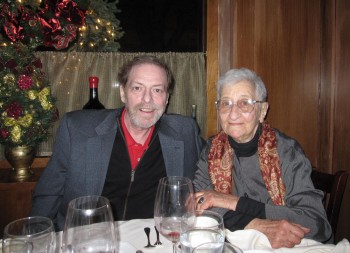 Forty years ago, on Tuesday Oct 10, 1972, 1 had just started my second day in animation working for John and Faith Hubley. I was scheduled to work three days to help finish a commercial. Helen Komar was the only other person working on that commercial with me. She was the production coordinator. My second day there, and I was working as intensely as 1 could. 1 loved being there, I was finally doing animation and getting paid for it.
Forty years ago, on Tuesday Oct 10, 1972, 1 had just started my second day in animation working for John and Faith Hubley. I was scheduled to work three days to help finish a commercial. Helen Komar was the only other person working on that commercial with me. She was the production coordinator. My second day there, and I was working as intensely as 1 could. 1 loved being there, I was finally doing animation and getting paid for it.
That day, 1 continued to work through my lunch break; I wanted to get it right. That’s when T heard this voice with a sharp Hungarian accent say loud enough, “Who has been doing such HORRIBLE inbetweens?” Sheepishly I looked up and had to admit that we all knew she was talking about me. Especially since I was the only one doing inbetweens. That’s how I met Tissa David.
Tissa proposed I come to take lessons from her; she would help teach me what she could about animation. This meant I spent a lot of time doing homework that Tissa would give me inbetweening over and over and over again animation drawings that were usually from a scene that Grim Natwick had animated. Back then, Tissa had a sharp way of telling you how bad you were. It didn’t take me long to find the humor in what she had to say, especially since 1 was even more of a critic of my own work than she was.
Things changed a bit over the years. Tissa grew more and more reserved with her opinions. She made an obvious attempt to moderate herself when she thought it was too harsh. However, I always tried to encourage her to fully express what she thought about my work, and I like to think she was honest with me throughout.
Somewhere along the line I stopped asking for help with animation. Slowly we became more friends rather than teacher and student. When she left the Hubley studio to work for Richard Williams on Raggedy Ann, knowing full well that I was a big fan
of Dick Williams’ work, she maneuvered a job for me on the production. Starting as an inbetweener, I worked my way up to the position of head of Assistants and Inbetweeners.
After that, I was hired by Bob Blechman to be his Asst Director working on a Christmas Special. Before we got to that we did a number of commercials together. Once Bob had difficulty finding an animator, and 11 talked loudly and enthusiastically about Tissa’s work. She soon started working with Bob in a relationship that lasted years.
When I formed my own studio, I directed a number of half hour shows. Tissa was happy to work for me in many capacities. She did storyboard, layout and sometimes animation. We helped each other often by just being there. That made a lot of the jobs more fun, and helped me feel even more proud of the work I was doing.
The last couple of years weren’t about animation, really. Yet the two of us were able to keep laughing throughout. And talking. Talking about museum shows and films that we saw. Sharing books we’d read or just sometimes talking. I was never much of a phone person so it had to be face on.
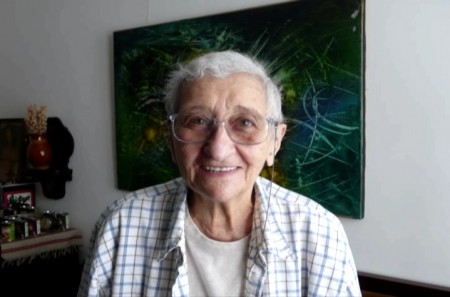
Tissa in her Living Room
Photo by Mate Hidvegi
In the end 1 learned that Tissa had developed a brain tumor. Of course, I didn’t know whether that meant she would have a long slow death or a quick one. 1 went one Saturday afternoon and laughed quite a bit with Tissa. When I brought up old names and places and events, she remembered them clearly. If she tried to remember something, she couldn’t, and the conversations would end flat. It meant I had to keep talking.
I left that afternoon and expected to return five days later. But that day I got a call from Susan Davis telling me that Tissa had died that day. She didn’t feel well in the morning, lay down for a while, and didn’t wake up.
I think her passing won’t really hit me for a while. I’ve been spending a lot of time editing this footage. Now this memorial is done, and I think the reality won’t hit home until Christmas. Every year, I’ve received a wonderful fruit cake from Tissa. In fact, I still have a couple unopened. I know that one won’t arrive this year, and I’ll miss my fruitcake this year.
This talk was followed by the last animation work Tissa did,
part of the animatic for my feature, POE.
.
.
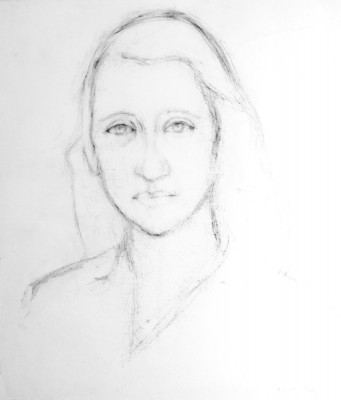 1
1
a 1942 drawing by Tissa’s close friend, artist,
Judit Reigl. The drawing is in the collection
of Tissa’s sister, Katalin David.
Thanks to Mate Hidvegi, Katalin’s son, for sending it.
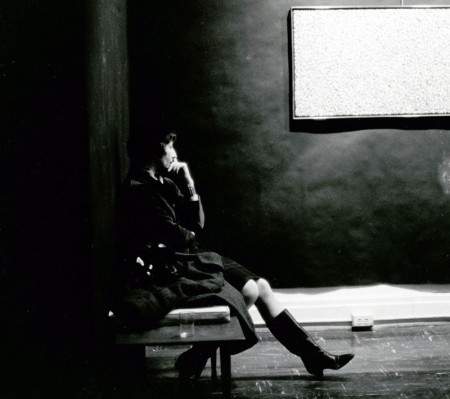 2
2
Tissa in an Art Gallery in the 60s
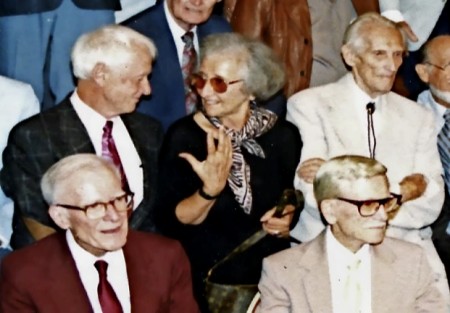 3
3
At Grim Natwick’s 100th birthday
(L to R) Duane Crowther, Tissa, Grim Natwick
in front of them: Frank Thomas, Virgil Ross
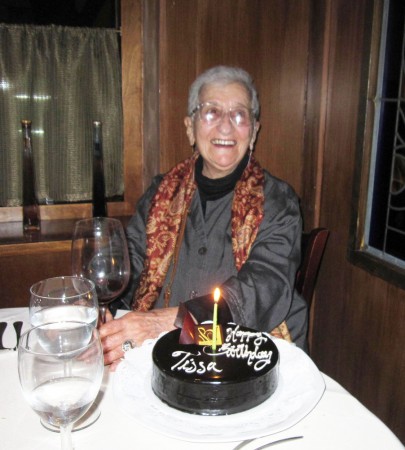 4
4
Tissa on her 90th birthday celebration dinner
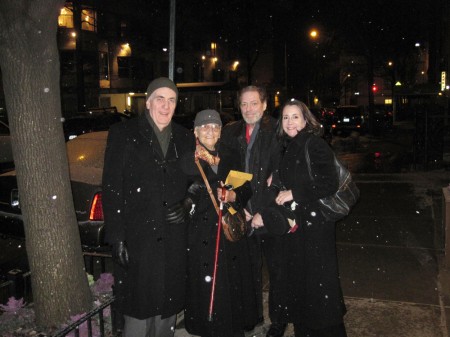 6
6
(L to R) John Canemaker, Tissa, Me, Heidi Stallings
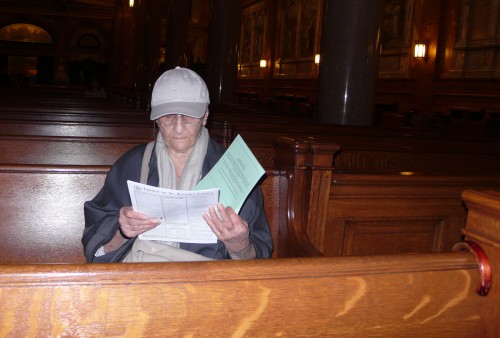 7
7
Tissa in St. Ignatius Loyola Church, 84th St, Madison Ave.
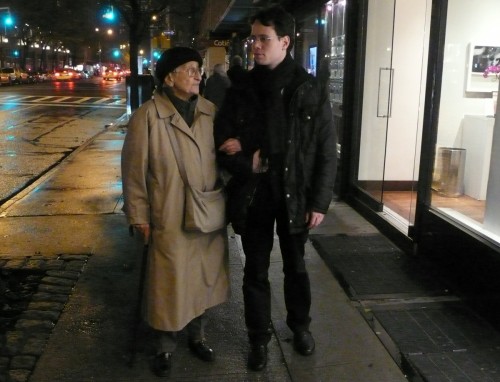 8
8
Tissa with Aron Hidvegi, her grand nephew
4, 5, & 6 photographed by Joe Kennedy
7, 8, 9, 11 & 12 photographed by Mate Hidvegi
10 photographed by Aron Hidvegi

